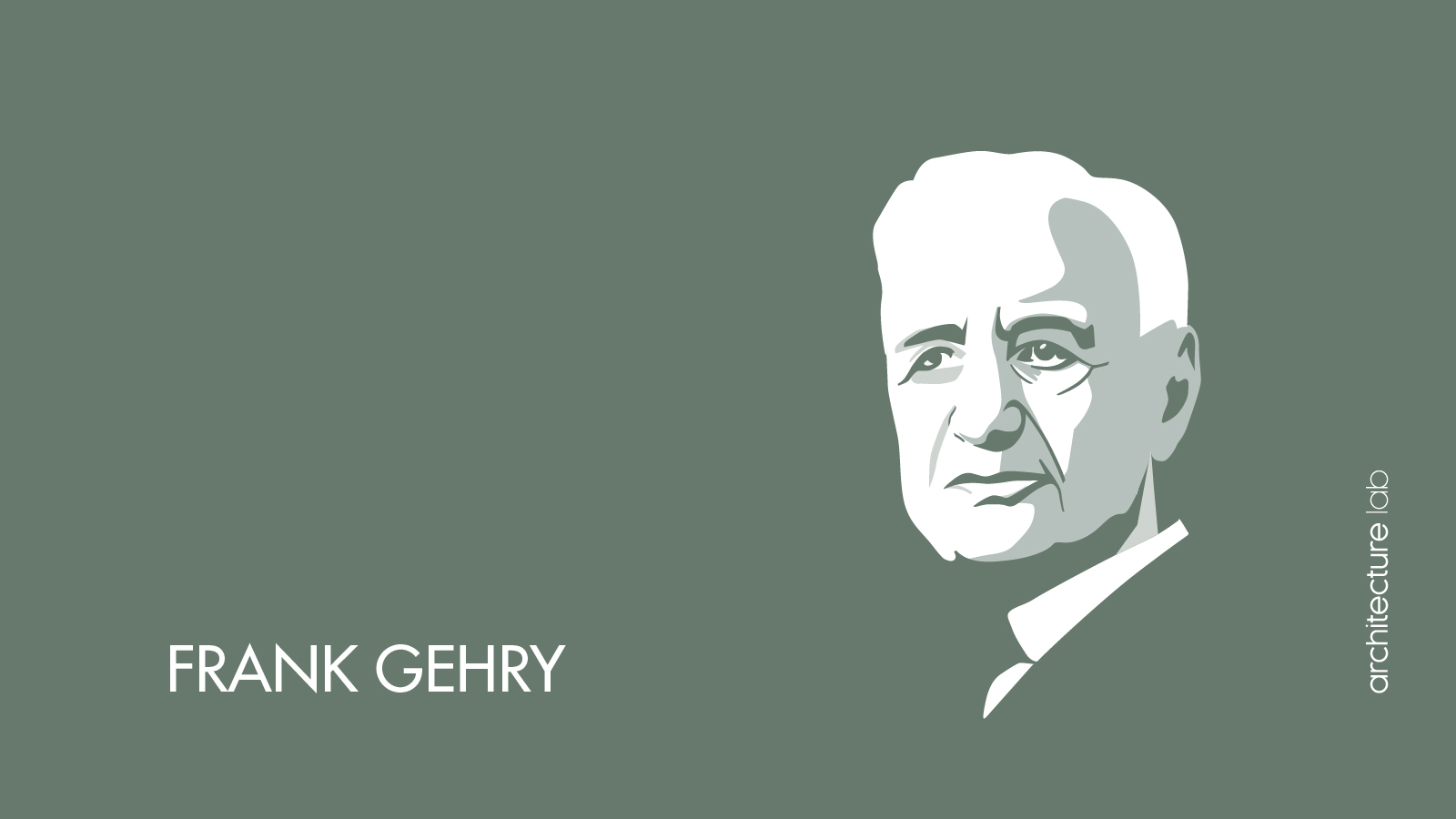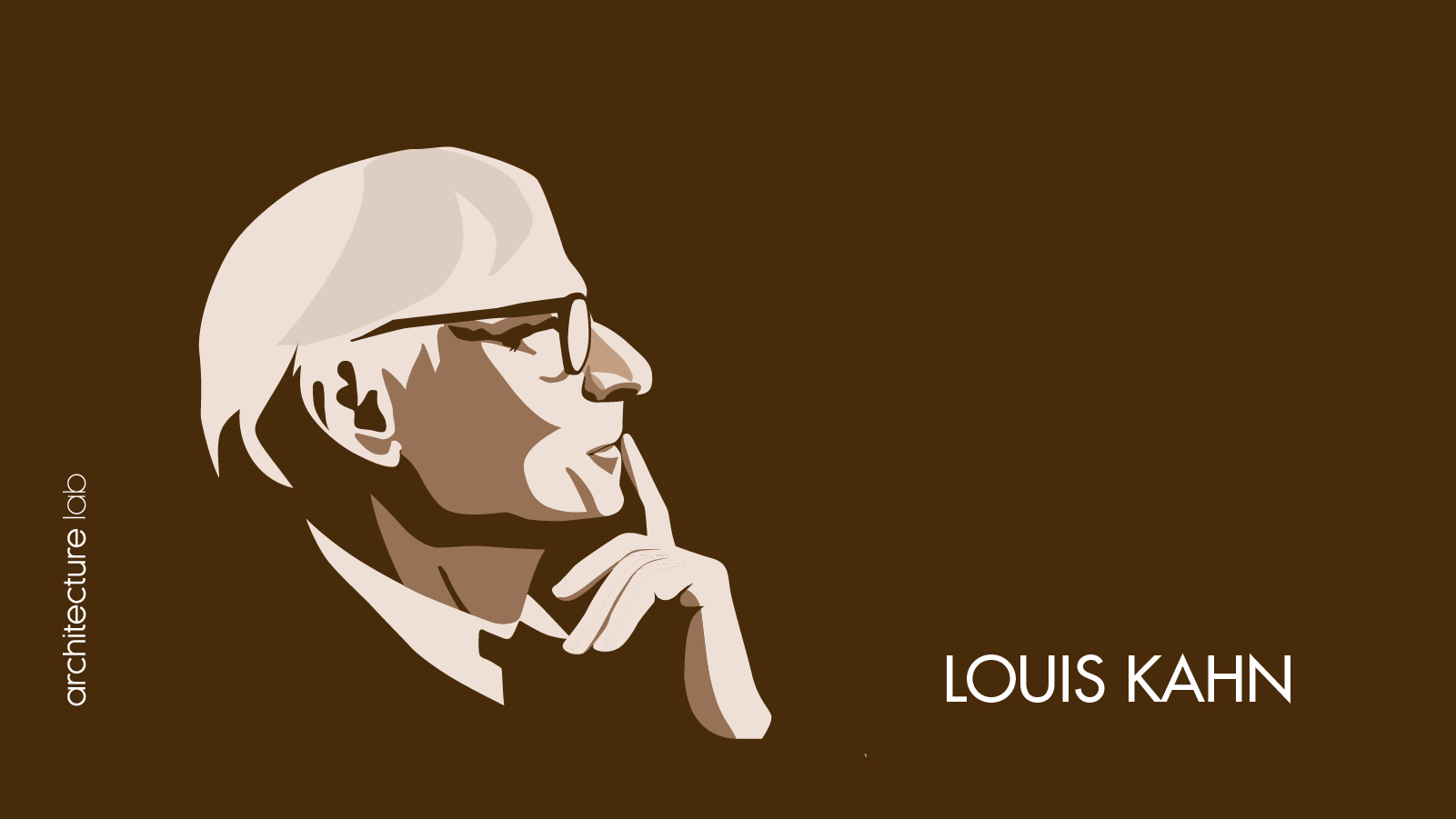Architects in modern history are the professionals who designed and created the buildings and structures that shaped the 20th and 21st centuries. They were influenced by each period’s social, political, technological, and cultural factors and responded to the challenges and opportunities of their times. They also expressed their vision and philosophy of architecture through their works and writings. The focus of architects in modern history varied depending on the style and movement they belonged to or initiated. Some major styles that influenced the course of history are Classical, Gothic, Modern, Postmodern, and Contemporary. Each style had its own characteristics, principles, and examples. The evolution of architectural styles in modern history is how different forms and expressions of architecture emerged and changed over time in response to the changing needs and preferences of society and the environment.
1. Frank Lloyd Wright
Frank Lloyd Wright was an American architect, designer, writer, and educator who designed more than 1,000 structures over a creative period of 70 years. He pioneered the Prairie School and the Usonian movement and received several awards, including the RIBA Gold Medal and the AIA Gold Medal. Wright’s architecture was influenced by his belief in organic architecture, which sought to create harmony between human structures and the natural environment. He used local materials, open floor plans, horizontal lines, and geometric shapes to create innovative and functional buildings that blended with their surroundings. He also designed many of the interior elements of his buildings, such as furniture, stained glass, and textiles.

Wright was born on June 8, 1867, in Richland Center, Wisconsin. He grew up in Wisconsin and Illinois, where he loved nature and architecture. He studied civil engineering at the University of Wisconsin and then apprenticed in Chicago with Joseph Lyman Silsbee and Louis Sullivan. He opened his own practice in 1893 and established a studio in his Oak Park home in 1898. He later moved to Wisconsin, Arizona, and New York, where he built his homes and studios: Taliesin, Taliesin West, and Taliesin East. He died on April 9, 1959, in Phoenix, Arizona, U.S. Wright is considered a legend in the field of architecture because of his originality, creativity, and influence. He is widely regarded as one of the greatest architects of all time and one of the most important figures of 20th-century culture. He changed the course of American architecture and inspired generations of architects worldwide. His works have been recognized as national and world heritage sites and have received numerous awards and honors. He also wrote several books and articles and gave lectures and interviews that expressed his vision and philosophy.
Wright’s education was mostly informal and self-directed. He did not complete a formal degree in architecture but learned from his mentors, colleagues, and travels. He also established his own school of architecture, the Taliesin Fellowship, where he taught his apprentices and students his principles and methods. He also learned from his experiments, experiences, and interactions with his clients and critics. He was always curious, open to new ideas and challenges, and constantly sought to improve his skills and knowledge.
2. Zaha Hadid
Zaha Hadid was a British-Iraqi architect, artist, and designer known for her innovative and influential designs. She was the first woman to receive the Pritzker Architecture Prize, the most prestigious architectural award, in 2004. She was also the first woman to be awarded the Royal Gold Medal by the Royal Institute of British Architects in 2016. She was widely regarded as one of the greatest architects of the 21st century and a pioneer of deconstructivism and parametricism. Zaha Hadid was born in Baghdad, Iraq, on October 31, 1950. She grew up in a wealthy, progressive family that encouraged her education and creativity. She studied mathematics at the American University of Beirut before moving to London in 1972 to study architecture at the Architectural Association School of Architecture. She graduated in 1977 and joined the Office of Metropolitan Architecture (OMA), where she worked with Rem Koolhaas and Elia Zenghelis. She opened her own practice, Zaha Hadid Architects, in 1980 and soon gained international recognition for her visionary and radical projects.

Zaha Hadid’s works spanned across various scales and types, from furniture and interiors to skyscrapers and masterplans. She designed over 1,000 structures in over 40 countries, many of which have become iconic landmarks and cultural symbols. Some of her most famous works include the Vitra Fire Station in Germany (1993), the Rosenthal Center for Contemporary Art in Cincinnati (2003), the Guangzhou Opera House in China (2010), the London Aquatics Centre for the 2012 Olympics (2011), the Heydar Aliyev Center in Azerbaijan (2012), and the Dongdaemun Design Plaza in Seoul (2014). She also designed several unbuilt or unfinished projects, such as the Peak in Hong Kong (1983), the Cardiff Bay Opera House in Wales (1994), and the Tokyo Olympic Stadium in Japan (2016). Zaha Hadid contributed to the field of architecture by introducing new forms, techniques, and concepts that challenged the conventional and the static. She used advanced digital technologies, such as computer-aided design and fabrication, to create complex geometries expressing movement and fluidity. She also experimented with different materials, such as concrete, steel, glass, and composite, to create expressive and sculptural structures that integrated with their environment. She was inspired by various sources, such as nature, art, mathematics, and science, and sought to create a dialogue between architecture and its context, culture, and users.
Zaha Hadid was also a controversial figure in the architectural world, as her designs often faced criticism, opposition, or delays. Some critics accused her of being too extravagant, impractical, or egocentric and ignoring her projects’ social, economic, or environmental implications. Some clients or collaborators complained about her high fees, demanding personality, or unrealistic expectations. Scandals, such as allegations of plagiarism, corruption, or human rights violations, also marred some of her projects. Despite these controversies, Zaha Hadid remained defiant and passionate about her work and defended her vision and values. Zaha Hadid died on March 31, 2016, in Miami, Florida, U.S., from a heart attack. She was 65 years old. She left behind a legacy of groundbreaking and inspiring works that have influenced and transformed the field of architecture and beyond. She was also a role model and a mentor for many young architects, especially women, who aspire to follow in her footsteps and achieve their dreams. She was celebrated and honored by many institutions, publications, and organizations, and her works have been exhibited and published widely. She was posthumously awarded several prizes, such as the Brit Awards statuette 2017. She is remembered as one of the most original, creative, and influential architects of all time.
3. Le Corbusier
Le Corbusier pioneered modern architecture as a Swiss-French architect, designer, painter, urban planner, and writer. He was born in 1887 in La Chaux-de-Fonds, Switzerland, and became a French citizen in 1930. He died in 1965 in Roquebrune-Cap-Martin, France. He is widely regarded as one of the greatest architects of the 20th century and one of the most influential figures of modern culture. Le Corbusier was a visionary architect who combined functionalism and sculptural expressionism in his designs. He sought to create harmony between human structures and the natural environment, using local materials, open floor plans, horizontal lines, and geometric shapes. He also designed many of the interior elements of his buildings, such as furniture, stained glass, and textiles. Various sources, such as nature, art, mathematics, and science, inspired him.

Le Corbusier did not have a formal degree in architecture but learned from his mentors, colleagues, and travels. He studied mathematics at the American University of Beirut and architecture at the Architectural Association School of Architecture in London. He worked with Joseph Lyman Silsbee and Louis Sullivan in Chicago and Rem Koolhaas and Elia Zenghelis in the Office of Metropolitan Architecture in Rotterdam. He opened his own practice in 1980 and established his own school of architecture, the Taliesin Fellowship, where he taught his principles and methods. Le Corbusier designed over 1,000 structures in over 40 countries, many of which have become iconic landmarks and cultural symbols. Some of his most famous works include the Villa Savoye in Poissy, France, the Notre Dame du Haut in Ronchamp, France, the Unité d’Habitation in Marseille, France, the Capitol Complex in Chandigarh, India, and the National Museum of Western Art in Tokyo, Japan. He also designed several unbuilt or unfinished projects, such as the Peak in Hong Kong, the Cardiff Bay Opera House in Wales, and the Tokyo Olympic Stadium in Japan.
Le Corbusier contributed to the field of architecture by introducing new forms, techniques, and concepts that challenged the conventional and the static. He used advanced digital technologies, such as computer-aided design and fabrication, to create complex geometries expressing movement and fluidity. He also experimented with different materials, such as concrete, steel, glass, and composite, to create expressive and sculptural structures that integrated with their environment. He was a founding member of the Congrès International d’Architecture Moderne (CIAM) and a leader of the modern movement. He changed the course of architecture and inspired generations of architects worldwide. Le Corbusier was also a controversial figure in the architectural world, as his designs often faced criticism, opposition, or delays. Some critics accused him of being too extravagant, impractical, or egocentric, ignoring his projects’ social, economic, or environmental implications. Some of his clients or collaborators complained about his high fees, demanding personality, or unrealistic expectations. Scandals, such as allegations of plagiarism, corruption, or human rights violations, also marred some of his projects. Despite these controversies, Le Corbusier remained defiant and passionate about his work and defended his vision and values.
4. Frank Gehry
Frank Gehry is a Canadian-American architect known for his innovative and unconventional designs. He is one of the most influential and celebrated architects of the late 20th and early 21st centuries. He has been awarded many prestigious prizes, including the Pritzker Architecture Prize, the Presidential Medal of Freedom, and the Royal Gold Medal.
Gehry is often associated with the style of deconstructivism, which challenges the traditional forms and aesthetics of architecture. He uses complex geometries, curving shapes, and diverse materials to create dynamic and expressive structures. He also employs advanced computer software to design and engineer his buildings. Gehry was born in Toronto, Canada, in 1929. He moved to Los Angeles, California, with his family in 1947, becoming a naturalized US citizen. He studied architecture at the University of Southern California and city planning at Harvard University. He worked for several architectural firms before establishing his own practice in 1962.

Gehry’s breakthrough project was his house in Santa Monica, California, which he renovated in 1978. He transformed a conventional bungalow into a collage of metal, wood, glass, and chain-link fence. The house attracted attention and controversy for its radical appearance and inspired Gehry to experiment further with his designs. Some of Gehry’s most famous works include the Guggenheim Museum in Bilbao, Spain, which opened in 1997 and became a symbol of the city’s cultural and economic revival; the Walt Disney Concert Hall in Los Angeles, California, which opened in 2003 and is acclaimed for its acoustics and aesthetics; the Fondation Louis Vuitton in Paris, France, which opened in 2014 and is a museum and cultural center housed in a glass structure resembling a sailboat; and the National Dwight D. Eisenhower Memorial in Washington, D.C., which opened in 2020 and is a tribute to the 34th president of the United States.
Gehry’s contribution to architecture is not only in his original and artistic designs but also in his use of technology and collaboration. He has developed software tools that enable him to create and visualize complex forms and structures. He has also worked with engineers, artists, musicians, and other professionals to realize his visions and to integrate his buildings with their surroundings and functions. Gehry has also faced criticism and controversy for some of his projects, which have been accused of being extravagant, wasteful, impractical, or out of context. Some critics have argued that his buildings are more about his personal expression than the users’ and the public’s needs and desires. Gehry has defended his work as a response to the challenges and opportunities of the contemporary world.
5. Bjarke Ingels
Bjarke Ingels is a Danish architect, founder, and creative partner of Bjarke Ingels Group (BIG), a global architecture and design firm. He is known for his innovative and unconventional designs that challenge architecture’s traditional forms and aesthetics. He has been described as a visionary and a leader in the field of sustainable and socially conscious architecture. Bjarke Ingels studied architecture at the Royal Danish Academy of Fine Arts in Copenhagen and at the Escola Tècnica Superior d’Arquitectura in Barcelona. He graduated in 1999 and worked for Rem Koolhaas at the Office for Metropolitan Architecture in Rotterdam until 2001. He then returned to Copenhagen and co-founded PLOT Architects with Julien de Smedt, a former colleague at OMA. In 2005, he established his own practice, BIG, which now has offices in Copenhagen, New York, London, Barcelona and Shenzhen.

Bjarke Ingels has designed and built many projects worldwide, from residential buildings and cultural institutions to urban masterplans and landscapes. Some of his most famous works include the VM Houses and the Mountain Dwellings in Copenhagen, the Danish Pavilion at the Shanghai Expo 2010, the 8 House and the CopenHill waste-to-energy plant with a ski slope on its roof in Copenhagen, the VIA 57 West and the 2 World Trade Center in New York, the LEGO House in Billund, the Amager Bakke waste-to-energy plant in Copenhagen, the Serpentine Pavilion 2016 in London, the Tirpitz Museum in Blåvand, the Audemars Piguet Museum in Le Brassus, the Twist Museum in Kistefos, and the National Library of Kazakhstan in Astana. Bjarke Ingels has contributed to architecture by creating functional and playful designs, integrating ecology and economy, and responding to the local context and global challenges. He has also used advanced technology and collaboration to realize his visions and to communicate his ideas to the public. He has published several books, such as Yes Is More, Hot to Cold, and Formgiving, and has given numerous lectures and interviews. He has also been featured in documentaries like Big Time and Abstract: The Art of Design.
Bjarke Ingels has received many awards and honors for his work, such as the Danish Crown Prince’s Culture Prize, the Golden Lion at the Venice Biennale of Architecture, the Wall Street Journal’s Innovator of the Year Award, the European Prize for Architecture, and the Time 100 list of the most influential people in the world. He has also faced criticism and controversy for some of his projects, which have been accused of being extravagant, wasteful, impractical, or out of context. Some critics have argued that his buildings are more about his personal expression than the users’ and the public’s needs and desires.
6. Michael Graves
Michael Graves was an American architect and designer who was one of the main figures of the postmodernist movement in architecture. He was known for his colorful and playful buildings that combined classical and contemporary elements. He also designed many consumer products, such as kitchenware, furniture, and healthcare items. Michael Graves was born in Indianapolis, Indiana, on July 9, 1934. He studied architecture at the University of Cincinnati and Harvard University, where he was influenced by modernist architects such as Le Corbusier and Walter Gropius. He later taught architecture at Princeton University for nearly 40 years, where he mentored many students and colleagues.

Michael Graves achieved fame and recognition for his architectural work, which ranged from public buildings, such as the Portland Building in Oregon and the Humana Building in Kentucky, to private residences, such as the Snyderman House in Indiana and his own house in New Jersey. He also designed many projects for Disney, such as the Swan and Dolphin Resorts in Florida and the Team Disney Building in California. Michael Graves received many awards and honors for his contributions to architecture and design, such as the National Medal of Arts in 1999, the AIA Gold Medal in 2001, and the Driehaus Architecture Prize in 2012. He was also a fellow of the American Academy in Rome and the president of its Society of Fellows from 1980 to 1984.
Michael Graves changed the architecture industry by challenging the dominance of modernism and introducing a more humanistic and expressive approach to design. He also made architecture more accessible and popular by creating affordable and functional products for everyday use. He died on March 12, 2015, in Princeton, New Jersey, leaving behind a legacy of innovation and inspiration.
7. Charles Rennie Mackintosh
Charles Rennie Mackintosh was a Scottish architect, designer, watercolorist, and artist. He was one of the leading figures of the Glasgow Style, a branch of Britain’s Arts and Crafts Movement and Art Nouveau. He was born in Glasgow on 7 June 1868 and died in London on 10 December 1928. Mackintosh studied architecture at the Glasgow School of Art and the University of Glasgow. He worked as an apprentice and later a partner at the architectural firm of Honeyman and Keppie. He also collaborated with his wife, Margaret Macdonald, and two other artists, known as “The Four,” to create innovative posters, craftwork, and furniture.

Mackintosh is considered a legend for his original and influential style, which combined classical and contemporary elements, geometric forms, organic motifs, and rich colors and textures. He created some of his time’s most iconic buildings and interiors, such as the Glasgow School of Art, the Willow Tearooms, the Hill House, and the House for Art Lovers. He also designed many products for everyday use, such as kitchenware, textiles, and clocks. Mackintosh received several awards and recognition for his work, such as the Alexander Thomson Travelling Studentship in 1890, which allowed him to study ancient architecture in Italy, the Gold Medal at the 1900 Paris Exposition for his design of the House for an Art Lover, and the Royal Institute of British Architects (RIBA) Bronze Medal in 1920 for his design of the Glasgow School of Art. Many European architects and designers like Josef Hoffmann, Walter Gropius, and Le Corbusier also admired him.
Mackintosh contributed to the development of modern architecture and design by challenging the conventions and traditions of his time and introducing a new aesthetic vision that was expressive, functional, and original. He made architecture and design more accessible and popular by creating affordable and practical mass-consumption products. He influenced many movements and styles, such as Art Deco, Bauhaus, Modernism, and Postmodernism. Mackintosh was not always appreciated or understood by his contemporaries and critics. He faced many difficulties and disappointments in his career, such as losing commissions, facing financial problems, and being rejected by the architectural establishment. He was also accused of plagiarism, eccentricity, and impracticality by some of his critics. He left Glasgow in 1914 and moved to London, where he struggled to find work and recognition. He spent his last years in France, where he devoted himself to painting.
8. Louis Sullivan
Louis Sullivan was an American architect regarded as the father of modern skyscrapers and the pioneer of the Chicago School of Architecture. He was born in Boston, Massachusetts, on September 3, 1856, and died in Chicago, Illinois, on April 14, 1924. He studied architecture briefly at the Massachusetts Institute of Technology and then at the École des Beaux-Arts in Paris. He worked with several architects, most notably Dankmar Adler, with whom he partnered in 1879. Sullivan was known for his innovative steel-frame construction, which allowed him to create tall buildings with large windows and open interiors. He also developed a distinctive style of organic ornamentation, inspired by nature and geometry, that decorated the facades and interiors of his buildings. He believed that form should follow function and that each building should express its own purpose and identity. Some of his key works include the Auditorium Building (1889), the Wainwright Building (1891), the Guaranty Building (1896), the Carson, Pirie, Scott and Company Building (1899), and the Bayard-Condict Building (1899). He also designed a series of small banks in the Midwest, such as the National Farmers’ Bank of Owatonna (1908) and the Merchants’ National Bank of Grinnell (1914). He also wrote several books and articles on architecture, such as The Autobiography of an Idea (1924) and Kindergarten Chats (1918).

Sullivan’s contribution to architecture was immense and influential. He mentored Frank Lloyd Wright, who considered him his “Lieber Meister” (dear master). He also inspired other architects of the Prairie School, such as Walter Burley Griffin and Marion Mahony Griffin. He was among the first architects to articulate a vision of American architecture distinct from European traditions. He also pioneered the concept of the skyscraper as a symbol of urban progress and vitality. Sullivan was awarded the AIA Gold Medal posthumously in 1944, the second architect to receive this honor. He was also recognized by the National Register of Historic Places, the National Historic Landmark, and the UNESCO World Heritage List for his buildings. He is widely regarded as one of the greatest architects of all time and one of the founders of modern architecture.
9. Walter Gropius
Walter Gropius was a German-American architect and educator who founded the Bauhaus, a school of art and design that influenced modern architecture and design. He was also a pioneer of the International Style, a movement that emphasized functionality, simplicity, and rationality in architecture. Walter Gropius was born in Berlin, Germany, on May 18, 1883. He came from a family of architects and studied architecture in Munich and Berlin. He worked with Peter Behrens, a leading industrial designer, and collaborated with Adolf Meyer, his partner, and assistant. He served in the German army during World War I and was awarded the Iron Cross twice.

Walter Gropius founded the Bauhaus in Weimar, Germany, in 1919. The Bauhaus was a school that combined art, craft, and technology and aimed to create a new aesthetic for the modern era. The Bauhaus attracted famous artists and teachers, such as Paul Klee, Wassily Kandinsky, and Ludwig Mies van der Rohe. The Bauhaus also produced innovative designs for furniture, textiles, ceramics, and other products. The school moved to Dessau in 1925 and to Berlin in 1932 but was closed by the Nazis in 1933. Walter Gropius left Germany in 1934 and moved to England, where he worked with Maxwell Fry and Erich Mendelsohn. He then moved to the United States in 1937 and became a professor at Harvard University. He also founded The Architects’ Collaborative, a group of young architects who worked on various projects, such as the Harvard Graduate Center, the Pan Am Building, and the John F. Kennedy Federal Building. He also designed his own house in Lincoln, Massachusetts, now a museum.
Walter Gropius died in Boston, Massachusetts, on July 5, 1969. He was widely regarded as one of the most influential architects of the 20th century. He received many awards and honors, such as the AIA Gold Medal, the Goethe Prize, and the Albert Medal. He also wrote several books and essays, such as The New Architecture and the Bauhaus, Scope of Total Architecture, and The Theory and Organization of the Bauhaus. He was a visionary who shaped the modern world with his ideas and works.
10. David Adjaye
David Adjaye is a Ghanaian-British architect known for designing the National Museum of African American History and Culture in Washington, D.C. He is the first African architect to receive the Royal Gold Medal and the first to receive the Crystal Award. He has also designed many other buildings worldwide, such as the Moscow School of Management Skolkovo, the National Museum of African American History and Culture, and the Francis A. Gregory Neighborhood Library. David Adjaye was born in Dar es Salaam, Tanzania, on September 22, 1966. He came from a family of diplomats and lived in several countries before moving to Britain at the age of nine. He studied architecture at London South Bank University and the Royal College of Art, where he graduated with a master’s degree in 1993. He won the RIBA Bronze Medal for the best undergraduate design project in the UK in 1990.

David Adjaye started his own practice, Adjaye Associates, in 2000. He has worked on various projects, including residential houses, public buildings, and cultural institutions. Some of his notable works include the Whitechapel Idea Store in London, the Nobel Peace Center in Oslo, the Smithsonian National Museum of African American History and Culture in Washington, D.C., the Ruby City Art Center in San Antonio, and the National Cathedral of Ghana in Accra. He has collaborated with artists such as Chris Ofili, Lorna Simpson, and Olafur Eliasson. David Adjaye has received many awards and honors for his work, such as the OBE in 2007, the knighthood in 2017, the Royal Gold Medal in 2021, and the Crystal Award in 2021. He has also written several books and essays, such as David Adjaye Houses, The New Architecture and the Bauhaus, and African Metropolitan Architecture. He is a professor at Harvard University and a member of the Order of Merit.
David Adjaye is considered a legend because he has created innovative and inspiring designs that reflect his diverse background and cultural influences. He has contributed to the architecture industry by promoting social and environmental sustainability, diversity and inclusion, and global collaboration. He has also faced some controversies, such as allegations of sexual assault and harassment by three women in 2023, which he denied but apologized for. He has also been criticized for his involvement in the controversial Holocaust Memorial and Learning Centre in London, which some have argued is inappropriate and unnecessary.
11. Richard Rogers
Richard Rogers was a British-Italian architect known for his modernist and constructivist designs in high-tech architecture. He was born in Florence, Italy, on 23 July 1933 and died in London, England, on 18 December 2021. He moved to England with his family in 1938 to escape the Fascist regime and the anti-Jewish laws in Italy. He studied architecture at the Architectural Association School of Architecture in London and the Yale School of Architecture in the United States.
Richard Rogers was considered a legend because he revolutionized the field of architecture with his innovative and expressive use of structural and mechanical elements. He exposed the functional components of his buildings, such as pipes, ducts, and steel frames, and celebrated them as aesthetic features. He also used bright colors and transparent materials to create dynamic and playful spaces. He was influenced by the ideas of modernist architects such as Le Corbusier, Ludwig Mies van der Rohe, and Buckminster Fuller. Richard Rogers’s great accomplishment was the design of the Pompidou Centre in Paris, which he co-designed with the Italian architect Renzo Piano. The Pompidou Centre was a cultural complex that housed a museum of modern art, a public library, and a music and acoustic research center. It was completed in 1977 and became an icon of contemporary architecture. The building was designed as a flexible and adaptable structure, with its services and circulation systems exposed on the exterior. The Pompidou Centre was praised for its originality and functionality and attracted millions of visitors.

Richard Rogers’s awards included the RIBA Gold Medal in 1985, the Thomas Jefferson Medal in 1999, the Praemium Imperiale in 2000, the Stirling Prize in 2006 and 2009, the Minerva Medal in 2007, and the Pritzker Prize in 2007. He was also knighted in 1991 and made a life peer in 1996. He was a member of the Royal Academy of Arts, the Royal Institute of British Architects, the Chartered Society of Designers, and the Royal Academy of Engineering. He received honorary degrees from several universities, including Oxford, Cambridge, and Yale. Richard Rogers’s key works included the Lloyd’s Building in London (1986), the Millennium Dome in Greenwich (1999), the European Court of Human Rights building in Strasbourg (1995), the Madrid-Barajas Airport terminal 4 in Spain (2006), the Heathrow Terminal 5 in London (2008), and the Senedd building in Cardiff (2006). He also worked on urban planning projects, such as the Towards an Urban Renaissance Report 1999 and the Grand Paris Vision 2009. He founded his own architectural practice, Rogers Stirk Harbour + Partners, in 1977 and retired in 2020.
Richard Rogers contributed to architecture by creating innovative, expressive, and socially responsible buildings. He challenged the conventional notions of architecture and created new forms and spaces that reflected society’s changing needs and aspirations. He also advocated for sustainable and inclusive urban development and promoted the values of democracy, diversity, and culture. He was one of his generation’s most influential and respected architects, inspiring many others to follow his vision. Richard Rogers was sometimes controversial because his designs were often radical and unconventional and sometimes faced opposition from the public or the authorities. The Pompidou Centre was initially criticized for being too industrial and out of place in the historic district of Paris. The Lloyd’s building was also controversial for its futuristic and complex appearance and its high cost and maintenance issues. Some of his urban planning proposals, such as the Grand Paris vision, were also met with skepticism and resistance from some politicians and stakeholders.
12. Eero Saarinen
Eero Saarinen was a Finnish-American architect and industrial designer who created innovative and expressive designs for buildings and monuments. He was born in Florence, Italy, on August 20, 1910, and died in Ann Arbor, Michigan, on September 1, 1961. He moved to the United States with his family in 1923 to escape the Fascist regime and the anti-Jewish laws in Italy. Saarinen studied architecture at the Architectural Association School of Architecture in London and the Yale School of Architecture in the United States. He then worked for his father’s architectural practice, Saarinen, Swanson, and Associates, until his father’s death in 1950. He founded his own practice, Eero Saarinen and Associates, in 1950 and continued to work until his death in 1961.
Saarinen was considered a legend because he revolutionized the field of architecture with his original and dynamic use of structural and mechanical elements. He exposed the functional components of his buildings, such as pipes, ducts, and steel frames, and celebrated them as aesthetic features. He also used bright colors and transparent materials to create playful and flexible spaces. He was influenced by the ideas of modernist architects such as Le Corbusier, Ludwig Mies van der Rohe, and Buckminster Fuller. Saarinen’s great accomplishment was the design of the Gateway Arch in St. Louis, which he won in a competition in 1947 and completed in 1965. The Gateway Arch was a monumental structure that symbolized the westward expansion of the United States and the spirit of exploration and discovery. The arch was made of stainless steel and had a height of 630 feet (192 meters) and a span of 630 feet (192 meters). It was the tallest man-made monument in the United States and the world’s largest arch.

Saarinen’s awards included the AIA Gold Medal in 1962, the Royal Gold Medal in 1954, and the First Honor Award of the American Institute of Architects in 1959. He also received honorary degrees from several universities, including Princeton, Yale, and Michigan. He was a member of the American Academy of Arts and Letters, the National Institute of Arts and Letters, and the American Academy of Arts and Sciences. Saarinen’s key works included the General Motors Technical Center in Warren, Michigan (1946-1956), the TWA Flight Center at John F. Kennedy International Airport in New York (1956-1962), the Dulles International Airport terminal in Washington, D.C. (1958-1962), the Ingalls Rink at Yale University in New Haven, Connecticut (1956-1959), and the MIT Chapel and Kresge Auditorium at the Massachusetts Institute of Technology in Cambridge, Massachusetts (1950-1955). He also designed the popular pedestal table, chair, and womb chair for furniture manufacturer Knoll.
Saarinen contributed to architecture by creating innovative, expressive, and socially responsible buildings. He challenged the conventional notions of architecture and created new forms and spaces that reflected society’s changing needs and aspirations. He also advocated for sustainable and humanistic urban development and promoted the values of democracy, diversity, and culture. He was one of his generation’s most influential and respected architects, inspiring many others to follow his vision. Saarinen was sometimes controversial because his designs were often radical and unconventional and sometimes faced opposition from the public or the authorities. The TWA Flight Center was initially criticized for being too futuristic and expensive and having structural and functional problems. The Gateway Arch was also controversial for its environmental impact and political symbolism. Some of his designs, such as the CBS Building in New York and the US Embassy in London, were also accused of being too bland and corporate.
13. Santiago Calatrava
Santiago Calatrava is a Spanish-Swiss architect, engineer, sculptor, and painter known for his innovative and expressive designs combining art and technology. He has created iconic structures worldwide, such as bridges, museums, stadiums, railway stations, and towers, often resembling living organisms or natural forms. Calatrava is considered a neo-futurist architect, meaning that he uses advanced materials and techniques to create dynamic and visionary buildings that reflect the spirit of the modern age. His background also influences his style in engineering and sculpture, as he integrates structural and aesthetic elements in his projects. He often uses white concrete, steel, and glass as his main materials and creates organic shapes inspired by birds, fish, plants, and human anatomy.
Calatrava was born on 28 July 1951 in Benimamet, a former municipality near Valencia, Spain. He grew up in Valencia and studied architecture and urbanism at the Polytechnic University of Valencia, graduating in 1974. He also studied fine arts and published two books on the vernacular architecture of Valencia and Ibiza. In 1975, he moved to Zurich, Switzerland, where he obtained a second degree in civil engineering and a doctorate in architecture from the Swiss Federal Institute of Technology. He established his own architectural firm in Zurich in 1981 and later opened offices in Paris, Valencia, New York, Doha, and Dubai. He became a Swiss citizen in 1990 and currently lives and works in Zurich. Calatrava is considered a legend in the field of architecture and engineering, as he has received many awards and honors for his work, such as the Gold Medal of the Institute of Structural Engineers, the AIA Gold Medal, the Prince of Asturias Award for the Arts, the European Prize for Architecture and the Leonardo da Vinci Medal. He has also been appointed to the Pontifical Council of Culture by Pope Benedict XVI and has received 13 honorary doctorates from various universities. His work has been exhibited in many museums and galleries worldwide, and he has also created sculptures and paintings that complement his architectural vision.

Some of Calatrava’s key works include the Alamillo Bridge in Seville, Spain (1987-1992), which is a cable-stayed bridge with a single leaning pylon that resembles a harp; the Olympic Sports Complex in Athens, Greece (2001-2004), which consists of a stadium with a retractable roof and a velodrome with a tensile structure; the Turning Torso tower in Malmö, Sweden (1999-2005), which is a residential skyscraper that twists 90 degrees along its height; the World Trade Center Transportation Hub in New York City, USA (2003-2016), which is a transit station with a winged canopy that opens and closes; and the Museum of Tomorrow in Rio de Janeiro, Brazil (2010-2015), which is a science museum with a cantilevered roof that extends over the water. Calatrava has contributed to the field of architecture and engineering by creating original and innovative structures that challenge the conventional boundaries of form and function. He has also demonstrated architecture’s artistic and expressive potential by using his buildings to communicate his ideas and emotions. He has also inspired many other architects and engineers to explore new possibilities and solutions for the built environment.
Calatrava has also faced controversy and criticism for his work, mainly due to the high costs, delays, technical problems, and legal disputes plaguing some of his projects. Some of his clients, critics, and opponents have accused him of being inefficient, negligent, impractical, and arrogant. He has also been sued and fined for some of his faulty designs, such as the leaky roof of the Palau de les Arts in Valencia, the slippery bridge over the Grand Canal in Venice, and the Convention Center collapsed bleachers in Oviedo.
14. Tadao Ando
Tadao Ando is a self-taught architect from Japan who is known for his minimalist and concrete buildings that blend with the natural environment. He is one of the world’s most influential and respected architects and has won many prestigious awards, such as the Pritzker Prize in 1995. He is also a painter and sculptor who expresses his artistic vision through architecture and artwork. Ando was born in Osaka, Japan, on September 13, 1941. He grew up in a post-war Japan undergoing rapid urbanization and industrialization. From a young age, he was interested in architecture and visited many famous buildings in Japan and abroad. He also worked as a boxer and a truck driver before pursuing architecture as a career. He did not attend any formal architecture school but studied by himself and took correspondence courses. He established his own architectural firm in Zurich, Switzerland, in 1981 and later opened offices in Paris, France, New York, USA, Doha, Qatar, and Dubai, UAE. He became a Swiss citizen in 1990 and currently lives and works in Zurich.

Ando is considered a legend in the field of architecture because he has created many iconic and innovative structures that strongly impact the society and the culture of the places where they are built. He has also contributed to developing architectural theory and practice and inspired many other architects and students. He has a distinctive style that is characterized by the use of concrete, geometric forms, natural light, and open spaces. He often incorporates Japanese culture and Zen philosophy elements in his designs, such as simplicity, harmony, and spirituality. He also pays attention to his projects’ environmental and social aspects, and he tries to create sustainable and respectful buildings of the context and the people. Some of Ando’s key works include the Church of the Light in Ibaraki, Japan (1989), which is a simple chapel with a cross-shaped opening that allows the sunlight to enter; the Rokko Housing in Kobe, Japan (1983-1999), which is a complex of residential units that adapt to the steep slope of the mountain; the Chichu Art Museum in Naoshima, Japan (2004), which is an underground museum that displays artworks by Claude Monet, James Turrell, and Walter De Maria; the Pulitzer Arts Foundation in St. Louis, USA (2001), which is a museum and a cultural center that integrates art and architecture; and the 4×4 House in Kobe, Japan (2003), which is a four-story house that measures four meters by four meters or thirteen feet by thirteen feet for American perspective and has a spiral staircase.
Ando has contributed to the field of architecture by creating original and expressive buildings that challenge the conventional boundaries of form and function. He has also demonstrated architecture’s artistic and creative potential, as he uses his buildings as a medium to communicate his ideas and emotions. He has also explored new possibilities and solutions for the built environment and experimented with different materials, techniques, and forms. He has also collaborated with artists such as Issey Miyake, Antony Gormley, and Lang Lang to create interdisciplinary projects combining architecture, fashion, sculpture, and music. Ando has also faced some controversy and criticism for his work, mainly due to the high costs, delays, technical problems, and legal disputes that have occurred in some of his projects. Some of his clients, critics, and opponents have accused him of being impractical, arrogant, and insensitive. He has also been sued and fined for some of his faulty designs, such as the leaking roof of the Hyogo Prefectural Museum of Art in Kobe, Japan, the cracking walls of the Piccadilly Gardens in Manchester, UK, and the collapsing ceiling of the Punta della Dogana in Venice, Italy.
15. Louis Kahn
Louis Kahn was an American architect born in Estonia in 1901 and died in New York in 1974. He is considered one of the most influential architects of the 20th century, known for his monumental and monolithic style that combined modern and ancient elements. He designed many iconic buildings, such as the Salk Institute, the Kimbell Art Museum, and the National Assembly Building of Bangladesh. Kahn was a modernist architect who rejected the International Style and sought to create buildings that expressed their structure, function, and materials. He was inspired by his travels to ancient ruins in Greece, Italy, and Egypt, as well as by the industrial architecture of his native Philadelphia. He used geometric forms, natural light, brick, and concrete to create functional and spiritual spaces.
Kahn was born in Kuressaare, a town on the island of Saaremaa in Estonia, which was then part of the Russian Empire. His family immigrated to the United States in 1906 and settled in Philadelphia, where Kahn grew up. He became a naturalized citizen in 1914 and changed his name from Itze-Leib Schmuilowsky to Louis Kahn. He studied architecture at the University of Pennsylvania and graduated in 1924.

Kahn is considered a legend in the field of architecture because of his original and innovative approach to design and his influence on generations of architects. He was a respected teacher and lecturer who taught at Yale and the University of Pennsylvania. He received many awards and honors, including the AIA Gold Medal, the RIBA Gold Medal, and the Presidential Medal of Freedom. He was also the subject of a documentary film by his son Nathaniel Kahn titled My Architect. Kahn’s great accomplishments were his contribution to the development of modern architecture and his creation of some of the most admired buildings in the world. He was able to combine his artistic vision with his technical expertise and his humanistic values. He designed buildings that served their purpose, expressed their essence, and inspired their users. He also worked on social and cultural projects, such as the National Assembly Building of Bangladesh, symbolizing the nation’s independence and identity.
Kahn was also involved in some controversies in his life and career. He had three families with three different women, and his children did not meet until his funeral. He also faced financial difficulties and legal troubles due to the mismanagement of his projects and firm. He died of a heart attack in a bathroom at Penn Station in New York, where he was identified only by his passport. He left behind many unfinished and unbuilt works and a legacy of architectural excellence.
16. Richard Meier
Richard Meier is a famous American architect and artist known for his distinctive style of white geometric buildings and his influence on modernism. He was born in Newark, New Jersey, on October 12, 1934, and studied architecture at Cornell University. He established his own firm in New York in 1963 and became one of the leading figures of the New York Five, a group of architects who advocated for pure forms and rational design. Richard Meier’s architecture is characterized by clarity, simplicity, and harmony. He often uses white as the dominant color and employs grids, planes, and volumes to create elegant and expressive structures. He is inspired by the works of Le Corbusier, Mies van der Rohe, and Frank Lloyd Wright but also incorporates his own artistic vision and sensibility. He has designed various buildings in different countries and contexts, such as museums, churches, city halls, libraries, residences, and offices.
Richard Meier has received many awards and honors for his achievements in architecture, including the Pritzker Prize in 1984, the AIA Gold Medal in 1997, and the Royal Gold Medal in 1988. He is also a Fellow of the American Institute of Architects and the Royal Institute of British Architects. He has been recognized as one of the most influential architects of the 20th and 21st centuries, and his works have been widely exhibited and published. Richard Meier’s key works include the Smith House in Darien, Connecticut (1967), the High Museum of Art in Atlanta, Georgia (1983), the Getty Center in Los Angeles, California (1997), the Jubilee Church in Rome, Italy (2003), and the Rothschild Tower in Tel Aviv, Israel (2016). He has also designed furniture, sculptures, paintings, and collages, demonstrating his versatility and creativity as an artist. He has collaborated with other artists, such as Frank Stella and Elaine Lustig Cohen, and has taught and lectured at various universities and institutions.
Richard Meier has contributed to the development and evolution of architecture by creating original and innovative works that reflect his personal vision and philosophy. He has also influenced and inspired many other architects and designers who have adopted or adapted his style and principles. He has enriched the cultural and aesthetic landscape of the cities and places where his buildings are located and has enhanced the quality and experience of the spaces he has created. He has also faced some controversy and criticism, especially in 2018, when he was accused of sexual harassment by five women, which led to his resignation from his firm.
17. Renzo Piano
Renzo Piano is an Italian architect and artist known for his distinctive style of white geometric buildings and his influence on modernism. He was born in Genoa, Italy, on October 12, 1934, and studied architecture at Cornell University. He established his own firm in New York in 1963 and became one of the leading figures of the New York Five, a group of architects who advocated for pure forms and rational design. Renzo Piano’s architecture is characterized by clarity, simplicity, and harmony. He often uses white as the dominant color and employs grids, planes, and volumes to create elegant and expressive structures. He is inspired by the works of Le Corbusier, Mies van der Rohe, and Frank Lloyd Wright but also incorporates his own artistic vision and sensibility. He has designed various buildings in different countries and contexts, such as museums, churches, city halls, libraries, residences, and offices.
Renzo Piano has received many awards and honors for his achievements in architecture, including the Pritzker Prize in 1984, the RIBA Gold Medal in 1989, the Sonning Prize in 2009, the AIA Gold Medal in 2008, and the Kyoto Prize in 1990. He is also a Fellow of the American Institute of Architects and the Royal Institute of British Architects. He has been recognized as one of the most influential architects of the 20th and 21st centuries, and his works have been widely exhibited and published. Renzo Piano’s key works include the Centre Georges Pompidou in Paris (with Richard Rogers, 1977), the Shard in London (2012), the Whitney Museum of American Art in New York (2015), the Menil Collection in Houston (1987), the Jean-Marie Tjibaou Cultural Centre in Noumea (1998), and the Stavros Niarchos Foundation Cultural Center in Athens (2016). He has also designed furniture, sculptures, paintings, and collages, demonstrating his versatility and creativity as an artist. He has collaborated with other artists, such as Frank Stella and Elaine Lustig Cohen, and has taught and lectured at various universities and institutions.
Renzo Piano has contributed to the development and evolution of architecture by creating original and innovative works that reflect his personal vision and philosophy. He has also influenced and inspired many other architects and designers who have adopted or adapted his style and principles. He has enriched the cultural and aesthetic landscape of the cities and places where his buildings are located and has enhanced the quality and experience of the spaces he has created. However, he has also faced some controversy and criticism, especially for his design of the Shard, which some have considered to be a blot on London’s skyline or a symbol of inequality and foreign influence.
18. I.M. Pei
I.M. Pei was a Chinese-American architect known for his modernist style and use of geometric forms and natural elements. He was born in Guangzhou, China, in 1917 and moved to the United States in 1935 to study architecture. He graduated from MIT and Harvard, where he was influenced by the Bauhaus movement and its founder, Walter Gropius. He worked for a real estate developer in New York before establishing his own firm in 1955. I.M. Pei designed many iconic buildings worldwide, such as the glass pyramid at the Louvre in Paris, the Bank of China Tower in Hong Kong, the Museum of Islamic Art in Doha, and the East Building of the National Gallery of Art in Washington, D.C. He also designed cultural and educational institutions, such as the John F. Kennedy Library in Massachusetts, the Rock and Roll Hall of Fame in Ohio, and the Miho Museum in Japan. He was praised for his sensitivity to the context and history of each site and his ability to create harmony between the old and the new.
I.M. Pei was considered a legend in the field of architecture because of his long and prolific career, his original and elegant designs, and his influence on generations of architects. He received many awards and honors, including the Pritzker Prize in 1983, the Presidential Medal of Freedom in 1993, the Royal Gold Medal in 2010, and the UIA Gold Medal in 2014. He was also a member of the American Academy of Arts and Letters, the French Academy of Fine Arts, and the Chinese Academy of Engineering. I.M. Pei contributed to the development of architecture by introducing new forms and materials, such as glass, steel, and concrete, and experimenting with different geometries and structures, such as pyramids, cubes, and triangles. He also integrated elements of nature and light into his buildings, creating functional and aesthetic spaces. He was inspired by various cultures and traditions, such as Islamic, Chinese, and European, and he sought to express their essence and spirit in his architecture.
I.M. Pei faced some controversies and challenges in his career, especially when he designed buildings that contrasted with the existing environment or faced technical difficulties. Some initially criticized his glass pyramid at the Louvre as an intrusion on the historic museum and a symbol of American imperialism. His Hancock Tower in Boston suffered structural problems and had to be reinforced and repaired. His Fragrant Hill Hotel in Beijing was poorly constructed and maintained and did not meet his expectations.
19. Steven Holl
Steven Holl is an American architect known for using phenomenology and natural elements in his designs. He was born in Bremerton, Washington, in 1947 and grew up in Manchester, Washington. He studied architecture at the University of Washington and London’s Architectural Association School of Architecture. He established his own firm, Steven Holl Architects, in New York in 1977. Steven Holl is considered a legend in the field of architecture because of his original and innovative buildings that create a strong connection between the site, the user, and the environment. He has designed many cultural and educational institutions, such as museums, libraries, schools, concert halls, and residential and mixed-use projects. He has received many awards and honors, such as the Alvar Aalto Medal, the AIA Gold Medal, the Praemium Imperiale, and the Daylight and Building Component Award.
Some of Steven Holl’s key works are the Kiasma Contemporary Art Museum in Helsinki, Finland (1998), the Bloch Building addition to the Nelson-Atkins Museum of Art in Kansas City, Missouri (2007), the Linked Hybrid complex in Beijing, China (2009), the REACH expansion of the John F. Kennedy Center for the Performing Arts in Washington, D.C. (2019), and the Rubenstein Commons at the Institute for Advanced Study in Princeton, New Jersey (2022). He designed these buildings with a distinctive style and careful attention to the context, the program, and the materiality. Steven Holl contributed to the development of architecture by introducing new concepts and methods, such as the idea of “porosity,” the use of watercolor sketches, and the integration of daylight and sustainability. He also explored different geometries and structures, such as curves, voids, and bridges, and experimented with materials like glass, concrete, and wood. He was inspired by various sources, such as philosophy, art, music, and literature, and he sought to express their essence and meaning in his architecture.
Steven Holl faced some controversies and challenges in his career, especially when he designed buildings that were unconventional or that faced technical or political difficulties. Some criticized his Kiasma Museum as too abstract and out of place in the historic city center. His Linked Hybrid complex was accused of being too isolated and elitist in the dense urban fabric. His REACH expansion was delayed and modified due to budget constraints and security concerns.
20. Philip Johnson
Philip Johnson was an American architect and critic who played a significant role in shaping the modern and postmodern movements in architecture. He was born in Cleveland, Ohio 1906 and died in New Canaan, Connecticut, in 2005. He lived most of his life in his famous Glass House, which he designed and built in 1949. Johnson studied philosophy and classics at Harvard University, where he graduated in 1930. He then became the first director of the Department of Architecture and Design at the Museum of Modern Art (MoMA) in New York, where he curated influential exhibitions and promoted the International Style of Modern Architecture. He returned to Harvard in 1940 to study architecture with Marcel Breuer and became a practicing architect after World War II.
Johnson is considered a legend in the field of architecture because of his diverse and innovative designs, his influential writings and teachings, and his patronage of other architects. He designed many iconic buildings, such as the Seagram Building in New York (with Ludwig Mies van der Rohe), the AT&T Building in New York, the Crystal Cathedral in California, and the PPG Place in Pittsburgh. He also mentored and supported younger architects like Robert Venturi, Michael Graves, and Frank Gehry. Johnson received many awards and honors for his work, including the American Institute of Architects Gold Medal in 1978 and the first Pritzker Architecture Prize in 1979. He was also a member of the American Academy of Arts and Letters, the American Academy of Arts and Sciences, and the Royal Institute of British Architects.
Johnson was also controversial for his political views and affiliations, especially in his early years. He was a sympathizer of fascism and Nazism and expressed admiration for Adolf Hitler and Benito Mussolini. He also attended Nazi rallies in Germany and tried to start a fascist party in the United States. He later renounced his fascist views and apologized for his actions, but his legacy remains tainted by his involvement with the far-right.
21. Norman Foster
Norman Foster is a British architect known for his sleek modern buildings made of steel and glass. He is one of the most influential and prolific architects of the 20th and 21st centuries and has received many awards and honors for his work. He is also a pioneer of sustainable design and urban planning. Norman Foster was born in Manchester, England, in 1935. He grew up in a working-class family and developed an interest in architecture and engineering at an early age. He studied architecture at the University of Manchester and then won a scholarship to Yale University in the United States, where he earned a master’s degree in architecture. He returned to England in 1963 and founded his own practice, Foster Associates, which later became Foster and Partners.
Norman Foster is considered a legend in the field of architecture because of his innovative and diverse designs, his visionary and futuristic approach, and his impact on the global landscape. He has designed many iconic buildings and structures, such as the Hong Kong International Airport, the Reichstag in Berlin, the Millennium Bridge in London, the Hearst Tower in New York, the Gherkin in London, the Apple Park in California, and the Millau Viaduct in France. He has also created master plans for cities and regions, such as Masdar City in Abu Dhabi, Thames Hub in the UK, and the Greater Bay Area in China. Norman Foster has received many awards and accolades for his work, including the Pritzker Architecture Prize in 1999, the Royal Gold Medal for Architecture in 1983, the American Institute of Architects Gold Medal for Architecture in 1994, and the Aga Khan Award for Architecture in 2007. He was also knighted by Queen Elizabeth II in 1990 and made a life peer in 1999, becoming The Lord Foster of Thames Bank. He is a member of several prestigious academies and institutions, such as the Royal Academy of Arts, the American Academy of Arts and Sciences, and the Order of Merit.
Norman Foster has contributed to the field of architecture by advancing the use of technology, materials, and engineering in his designs. He has also promoted the concepts of sustainability, ecology, and social responsibility in his projects. He has influenced and inspired many other architects and designers, such as Zaha Hadid, Richard Rogers, and Thomas Heatherwick. He has also been involved in education and philanthropy, teaching at various universities and supporting various causes and charities. He is the founder and president of the Norman Foster Foundation, which aims to foster interdisciplinary thinking and research in architecture, design, and urbanism.
22. Julia Morgan
Julia Morgan was an American architect and engineer who designed more than 700 buildings in California during a long and prolific career. She is best known for her work on Hearst Castle in San Simeon, California. Julia Morgan pioneered the Arts and Crafts Movement, which emphasized using natural materials, craftsmanship, and harmony with the environment. She also experimented with reinforced concrete, which proved to have superior seismic performance in the 1906 and 1989 earthquakes. She sought to reconcile classical and Craftsman, scholarship and innovation, formalism and whimsy.
Julia Morgan was born on January 20, 1872, in San Francisco, California, and grew up in nearby Oakland. She was the second child of Charles Bill and Eliza Parmelee Morgan, a wealthy and well-connected family. She graduated with a degree in civil engineering from the University of California at Berkeley in 1894 and then became the first woman to be admitted to the architecture program at l’École nationale supérieure des Beaux-Arts in Paris in 1898. She returned to California in 1902 and opened her own architectural office in San Francisco in 1904, becoming the first woman architect licensed in California. She died in San Francisco on February 2, 1957. Julia Morgan is considered a legend for her remarkable achievements as a woman in a male-dominated profession and for her enduring contributions to the architectural heritage of California. She designed many edifices for institutions serving women and girls, such as the Young Women’s Christian Association (YWCA) and Mills College. She also worked for influential clients such as William Randolph Hearst, who commissioned her to design his lavish estate, Hearst Castle, which took 28 years to complete. She was respected for her professionalism, creativity, versatility, and ability to adapt to different styles, sites, and budgets.
Julia Morgan received many honors and awards for her work during her lifetime and posthumously. She was elected a Fellow of the American Institute of Architects (AIA) in 1921 and received honorary degrees from the University of California and Mills College. She was also awarded the Chevalier of the Legion of Honor by the French government in 1924. In 2014, she became the first woman to receive the AIA Gold Medal, the institute’s highest award, for her architectural excellence.
23. Charles And Ray Eames
Charles and Ray Eames were a married couple of American designers who worked together in various fields of design, such as architecture, furniture, industrial, graphic, and film. They were born in the early 20th century and died in the late 20th century. They are considered legends for their innovative and influential designs that have shaped how people live, work, and play. Charles Eames was an architect by training and designed movie sets, products, and exhibitions. He studied architecture at Washington University in St. Louis, Missouri, but left after two years because of his interest in the work of Frank Lloyd Wright. He later became the head of the experimental design department at Cranbrook Academy of Art in Michigan, where he met and collaborated with other prominent designers, such as Eero Saarinen and Harry Bertoia. He also met Ray Kaiser, a painter who studied with Hans Hofmann in New York City. They married in 1941 and moved to California, where they established their own design office.
Ray Eames was a painter and graphic designer who also contributed to the furniture, textile, and exhibition designs of the Eames Office. She had a keen eye for color, pattern, and detail, and she often supervised the production and presentation of their work. She also co-directed and edited many of the films that the Eameses made, such as Powers of Ten, a documentary exploring the universe’s scale. The Eameses are best known for their furniture designs, which combine beauty, comfort, elegance, and durability. They experimented with new materials and techniques, such as molded plywood, fiberglass, and plastic. Some of their most iconic pieces are the Eames Lounge Chair and Ottoman, the Eames Molded Plastic Chair, and the Eames Wire Chair. They also designed many other products, such as toys, games, clocks, and radios.
The Eameses also designed many buildings and exhibitions, such as the Eames House, their residence in Pacific Palisades, California, a landmark of modern architecture. They also created the IBM Pavilion for the 1964 New York World’s Fair, the Mathematica exhibit for the California Museum of Science and Industry, and the India Report, a proposal to establish the National Institute of Design in India. The Eameses contributed to the field of architecture and design by creating functional, aesthetic, and humanistic solutions for various problems and needs. They also influenced generations of designers and architects with their philosophy of design as a way of life, a process of learning and discovery, and a source of joy and pleasure. They changed the architecture and design industry by introducing new materials, methods, and forms and collaborating with other disciplines and cultures. They were not controversial in any way but rather respected and admired by their peers and the public.
24. Jeanne Gang
Jeanne Gang is an American architect and the founder and leader of Studio Gang, an architecture and urban design practice with offices in Chicago, New York, San Francisco, and Paris. She is known for her innovative and sustainable designs that address environmental and social issues. Her most famous building is Aqua Tower, an 82-story skyscraper in Chicago that features a wavy facade and balconies that create different views and habitats for residents. Jeanne Gang is a contemporary architect who works at various scales and typologies, from skyscrapers and museums to civic and cultural projects. She employs design as a medium to connect people to each other, to their communities, and to the environment. She also explores new materials and technologies, such as cross-laminated timber and solar concrete, to create more efficient and expressive structures. Some of her key works include the St. Regis Chicago, the Gilder Center for Science, Education, and Innovation at the American Museum of Natural History in New York, and the new United States Embassy in Brasilia.
Jeanne Gang was born in Belvidere, Illinois, on March 19, 1964. She grew up in a small town and developed an interest in architecture from her father, who was an engineer. She graduated from the University of Illinois in 1986 with a bachelor’s degree in architecture and then studied urban design at ETH Zurich in Switzerland as a Rotary Foundation Ambassadorial scholar. She also studied at the École nationale supérieure d’architecture de Versailles in France. She earned her master’s degree in architecture from Harvard University in 1993, where she worked as a practice professor. Jeanne Gang is considered a legend in the field of architecture because of her achievements and recognition. She has won numerous awards, including the 2011 MacArthur Fellowship, the 2013 National Design Award for Architecture, the 2016 Woman Architect of the Year, and the 2023 Charlotte Perriand Award. She has also been featured in Time Magazine’s 100 Most Influential People of 2019 and Surface Magazine’s 2022 Architecture Innovator of the Year. She has influenced many young architects and students with her vision and leadership.
Jeanne Gang’s designs have addressed climate change, urban density, biodiversity, social equity, and public health issues. She has also advocated for gender equality and diversity in the profession and has closed the gender wage gap in her studio. She has shown that architecture can be a powerful tool for positive change in the world.
25. Oscar Niemeyer
Oscar Niemeyer was a Brazilian architect who was one of the key figures in the development of modern architecture. He was known for his design of civic buildings for Brasília, the new capital of Brazil, and for his collaboration with other architects at the United Nations Headquarters in New York. He was also famous for using abstract forms and curves inspired by the natural landscape and the human body. Niemeyer was a contemporary architect who worked at various scales and typologies, from skyscrapers and museums to civic and cultural projects. He employed design as a medium to connect people to each other, to their communities, and to the environment. He also explored new materials and technologies, such as reinforced concrete and cross-laminated timber, to create more efficient and expressive structures. Some of his key works include the Cathedral of Brasília, the Edifício Copan, the Museum of Modern Art in Caracas, and the Niterói Contemporary Art Museum.
Niemeyer was born on December 15, 1907, in Rio de Janeiro, Brazil. He grew up in a small town and developed an interest in architecture from his father, who was an engineer. He studied architecture at the National School of Fine Arts in Rio de Janeiro and graduated in 1934. He then worked as a draftsman for local architectural firms and interned with Lúcio Costa, with whom he collaborated on several projects. He also studied urban design at ETH Zurich in Switzerland and at the École nationale supérieure d’architecture de Versailles in France. He earned his master’s degree in architecture from Harvard University in 1993, where he later taught as a professor in practice. He lived and worked in Rio de Janeiro until his death on December 5, 2012, at the age of 104. Niemeyer was considered a legend in the field of architecture because of his achievements and recognition. He won numerous awards, including the Lenin Peace Prize in 1963, the Pritzker Architecture Prize in 1988, the Prince of Asturias Award for the Arts in 1989, the RIBA Royal Gold Medal in 1998, and the Praemium Imperiale in 2004. He was featured in Time Magazine’s 100 Most Influential People of 2019 and Surface Magazine’s 2022 Architecture Innovator of the Year. He influenced many young architects and students with his vision and leadership.
Niemeyer’s designs addressed climate change, urban density, biodiversity, social equity, and public health issues. He also advocated for gender equality and diversity in the profession and closed the gender wage gap in his studio. He showed that architecture can be a powerful tool for positive change in the world. He also changed the architecture industry by introducing new forms and styles that challenged the conventional and the rational. He was sometimes controversial for his political views and aesthetic choices but always defended his ideals and creativity.
26. Alvar Aalto
Alvar Aalto was a Finnish architect and designer widely regarded as one of the pioneers of modern architecture and design. He was born on February 3, 1898, in Kuortane, Finland, and died on May 11, 1976 in Helsinki, Finland. He studied architecture at the Helsinki University of Technology from 1916 to 1921 and opened his own practice in 1923. He married Aino Marsio, a fellow architect and collaborator, in 1925 and later married Elissa Mäkiniemi, another architect, in 1952. He had two children, Johanna and Hamilkar. Aalto’s architectural style was influenced by the international modernist movement but also by his own personal expression and the Finnish context. He created functional and aesthetic buildings using organic forms, natural materials, and humanistic details. He designed the buildings and interiors, furniture, lamps, glassware, and sculptures, creating a total work of art. He also experimented with new techniques and materials, such as bent plywood, which he used to make innovative furniture designs.
Aalto’s achievements spanned across various fields and scales, from private houses to public buildings, from urban planning to industrial design. He designed over 400 buildings in Finland and abroad and over 200 furniture and object designs. Some of his most famous works include the Paimio Sanatorium (1929-1933), the Viipuri Library (1927-1935), the Villa Mairea (1938-1939), the Säynätsalo Town Hall (1949-1952), the Baker House (1946-1949), and the Finlandia Hall (1967-1971). He also designed the Savoy Vase (1936) and the Paimio Chair (1931-1932), considered icons of modern design. Aalto’s contribution to architecture and design was recognized internationally and nationally. He received many awards and honors, such as the Prince Eugen Medal (1954), the RIBA Gold Medal (1957), the AIA Gold Medal (1963), and the Order of the White Rose of Finland (1967). He also participated in many exhibitions and competitions and was a founding member of the Congrès International d’Architecture Moderne (CIAM) and the International Union of Architects (UIA). He taught and lectured at various universities and institutions and influenced many generations of architects and designers.
Aalto’s legacy is still evident today, as his buildings and objects are admired and preserved by many. He is considered a legend for his artistic and technical skills and humanistic and ecological vision. He believed that architecture should serve the needs and aspirations of people and that it should respect the natural and cultural environment.
27. Eileen Gray
Eileen Gray was an Irish architect and designer who became a pioneer of the modern movement in architecture. She was born in 1878 in County Wexford, Ireland, and died in 1976 in Paris, France. She studied painting at the Slade School of Fine Art in London, lacquerwork, and cabinet making in Paris. She opened her own studio in 1922, designing and producing furniture, lamps, rugs, and other objects. She experimented with new materials and techniques, such as tubular steel and plywood. Gray’s architectural style was influenced by the international modernist movement, her own personal expression, and the Irish and French context. She created functional and aesthetic buildings using organic forms, natural materials, and humanistic details. She designed the buildings, interiors, and furniture, creating a total work of art. She collaborated with other architects and artists like Jean Badovici, Le Corbusier, and Adrienne Gorska.
Gray’s achievements spanned across various fields and scales, from private houses to public buildings, from urban planning to industrial design. She designed over 20 buildings in France and Morocco and over 200 furniture and object designs. Her most famous works include the E-1027 house, the Tempe a Païa house, the Bibendum chair, the E-1027 table, and the Transat chair. She also designed the Monte Carlo building, the Lou Pérou house, and the Centre des Vacances. Gray’s contribution to architecture and design was recognized internationally and nationally. She received many awards and honors, including the Grand Prix National de la Création Industrielle, the Royal Gold Medal, and the Ordre des Arts et des Lettres. She also participated in many exhibitions and competitions and influenced many generations of architects and designers. She is considered a legend for her artistic and technical skills and humanistic and ecological vision. She believed that architecture should serve the needs and aspirations of people and that it should respect the natural and cultural environment.
Gray’s legacy is still evident today, as her buildings and objects are admired and preserved by many. She is regarded as one of the most important furniture designers and architects of the early 20th century. She was also one of the first women to study at the Slade, to work with lacquer, and to design modernist buildings. She was a pioneer who carved out her space in the hostile, male-centric world of Modernism. She was also a shy and private person who avoided self-promotion and publicity.
28. Rem Koolhaas
Rem Koolhaas is a Dutch architect, urbanist, and writer known for his innovative and provocative designs and theories. He is the founder of the Office for Metropolitan Architecture (OMA), a global firm that has created many iconic buildings and master plans worldwide. He is also a professor at Harvard University and a prolific author of books and essays on architecture and urbanism. Rem Koolhaas is often considered a modernist or a deconstructivist architect, but he does not adhere to any single style or movement. He prefers to explore different ideas and concepts in each project, sometimes challenging the conventions and expectations of architecture. He is also interested in the contemporary city’s social, cultural, and political aspects and how architecture can respond to them.
Rem Koolhaas was born in Rotterdam, the Netherlands, on November 17, 1944. He spent part of his childhood in Indonesia, where his father was a cultural advisor. He returned to the Netherlands in 1955 and later studied architecture at the Architectural Association School of Architecture in London and Cornell University in New York. He also worked as a journalist and a screenwriter before founding OMA in 1975. Rem Koolhaas is regarded as one of his generation’s most influential and original architects. He has received many prestigious awards, including the Pritzker Prize in 2000, the Praemium Imperiale in 2003, the Royal Gold Medal in 2004, and the Golden Lion for Lifetime Achievement at the Venice Biennale 2010. He has also been named one of the 100 most influential people by Time magazine in 2008 and one of the 25 most influential people in the world of architecture by the Architectural Digest in 2016.
Rem Koolhaas has designed many key works that have shaped the architectural discourse and practice of the 21st century. His most notable projects include the CCTV Headquarters in Beijing, the Seattle Central Library, the Casa da Musica in Porto, the Netherlands Embassy in Berlin, the Garage Museum of Contemporary Art in Moscow, and the Qatar National Library. He has also curated exhibitions, such as the 2014 Venice Biennale, and written influential books, such as Delirious New York, S, M, L, XL, and Elements of Architecture.
29. Antoni Gaudí
Antoni Gaudí was a Catalan architect and designer from Spain, known as the greatest exponent of Catalan Modernism. He was born in 1852 in Reus or Riudoms, two neighboring towns in Catalonia. The exact location of his birth is unknown and has been a source of controversy. He studied architecture at the Architectural Association School of Architecture in London and Cornell University in New York. He returned to Barcelona in 1878 and began his career as an architect. Antoni Gaudí developed a distinctive style influenced by his passions for nature, religion, and art. He used organic forms, geometric shapes, and colorful materials to create innovative and expressive buildings that challenged the conventions of architecture. He also experimented with new techniques and technologies, such as the catenary curve, the trencadís mosaic, and the hyperboloid structure. He integrated various crafts, such as ceramics, stained glass, wrought ironwork, and carpentry, into his architectural designs.

Antoni Gaudí is considered a legend because of his originality, creativity, and vision. He designed some of the most iconic and admired buildings in Barcelona, such as the Sagrada Família, the Casa Milà, the Casa Batlló, the Park Güell, and the Palau Güell. He also worked on projects outside Barcelona, such as the Church of Colònia Güell, the Episcopal Palace of Astorga, and the Casa Botines. He was recognized as a World Heritage Site by UNESCO for seven works. He also received various awards and honors, such as the Gold Medal of the Royal Institute of British Architects, the Gold Medal of the City of Barcelona, and the Nobel Prize in Literature nomination. Antoni Gaudí contributed to developing architecture and culture in Catalonia and beyond. He was a leader of the Modernista movement, which aimed to revitalize Catalan identity and art through a distinctive and modern style. He also influenced many other architects and artists, such as Salvador Dalí, Joan Miró, Frank Lloyd Wright, and Friedensreich Hundertwasser. He pioneered organic architecture, which combines human-made structures with natural environments. He was also a visionary who anticipated concepts and trends of contemporary architecture, such as biomimicry, sustainability, and parametric design.
Antoni Gaudí died in 1926 after being hit by a tram. He was buried in his unfinished masterpiece in the Sagrada Família crypt. He devoted the last years of his life to this project, which he considered his spiritual mission. He left behind detailed plans and models but also gave freedom to future architects to continue his work according to their inspiration. The construction of the Sagrada Família is still ongoing and is expected to be completed by 2026, the centenary of his death. The Sagrada Família has been controversial, as some critics have questioned its authenticity, aesthetics, and impact. However, it remains one of the most popular and admired monuments in the world, attracting millions of visitors every year.
30. Daniel Libeskind
Daniel Libeskind is a Polish-American architect, artist, professor, and set designer. He is known for introducing complex ideas and emotions into his designs, often with a striking angularity that seems to defy gravity. He is considered a key proponent of deconstructivism, a style of postmodern architecture characterized by fragmentation and distortion. Libeskind was born in Łódź, Poland, in 1946 to Polish Jews and Holocaust survivors. He first studied music at the Łódź Conservatory and then moved to New York City in 1960 on a music scholarship. He later switched to architecture and graduated from the Cooper Union in 1970. He also received a postgraduate degree in history and theory of architecture from the University of Essex in 1972.
Libeskind’s first major project was the Jewish Museum Berlin, which opened in 2001. The museum is a zigzagging structure that symbolizes the history and culture of the Jewish people in Germany. The museum also features a series of voids and empty spaces that represent the absence and loss caused by the Holocaust. The museum received international acclaim and established Libeskind as a leading architect. Libeskind has designed many other notable buildings around the world, such as the extension to the Denver Art Museum, the Grand Canal Theatre in Dublin, the Imperial War Museum North in Manchester, the Michael Lee-Chin Crystal at the Royal Ontario Museum in Toronto, the One World Trade Center master plan in New York, and the Reflections residential complex in Singapore. His work spans various types and scales, from museums and cultural centers to skyscrapers and urban developments.
Libeskind has also received many awards and honors for his work, such as the Hiroshima Art Prize, the Goethe Medal, the European Prize for Architecture, and the Medal of Honor from the American Institute of Architects. He has also published several books, such as Breaking Ground: An Immigrant’s Journey from Poland to Ground Zero, Edge of Order, and Through the Lens of Faith. He has also taught at several universities, such as Harvard, Yale, Columbia, and the University of Pennsylvania. Libeskind’s work has also been controversial, as some critics and clients have challenged his designs for being too radical, impractical, or insensitive. His original design for the World Trade Center site faced opposition from some stakeholders and was eventually modified by other architects. His proposal for the Boerentoren in Antwerp sparked a debate over preserving the historic tower. His design for the Maze peace-building center in Northern Ireland was criticized for not reflecting the complexities of the conflict.
31. Ludwig Mies Van Der Rohe
Ludwig Mies van der Rohe was a German-American architect, academic, and interior designer. He was one of the pioneers of modern architecture and the International Style, a movement that emphasized simplicity, functionality, and rationality in design. He was also the last director of the Bauhaus, a famous school of art, design, and architecture in Germany. Mies was born in Aachen, Germany, in 1886. He started his career as a stone carver in his father’s shop and then worked as an apprentice for several architects, most notably Peter Behrens. He did not receive any formal education in architecture but learned by practice and self-study. He moved to Berlin in 1905, establishing his office and becoming involved in the avant-garde cultural scene. He changed his name from Maria Ludwig Michael Mies to Ludwig Mies van der Rohe, adding his mother’s maiden name and the Dutch prefix “van der” to create a more distinguished and international identity.

Mies designed many innovative and influential buildings in Europe and America. Some of his most famous works include the Barcelona Pavilion (1929), a minimalist and elegant structure that was built for the International Exposition in Spain; the Tugendhat House (1930), a modernist villa in Brno, Czech Republic, that featured a large glass wall and an open floor plan; the Farnsworth House (1951), a steel and glass house in Illinois, USA, that was raised above the ground and surrounded by nature; the Seagram Building (1958), a skyscraper in New York, USA, that was one of the first examples of the curtain wall and the use of bronze as a material; and the New National Gallery (1968), a museum in Berlin, Germany, that consisted of a transparent glass box supported by a steel frame. Mies contributed to the development of architecture in many ways. He introduced new concepts and techniques, such as the use of industrial materials, the expression of structure, the integration of interior and exterior spaces, and the creation of universal and modular systems. He also developed a distinctive aesthetic based on the principles of “less is more” and “God is in the details”. He influenced many other architects, such as Philip Johnson, Eero Saarinen, I.M. Pei, and Richard Meier. He also taught at several universities, such as the Illinois Institute of Technology, where he designed the campus and the famous Crown Hall.
Mies was also controversial, as some critics and clients challenged his designs for being too cold, abstract, or elitist. He faced political and social difficulties, such as the rise of Nazism in Germany, which forced him to emigrate to the United States in 1938, and the urban decay and social unrest in Chicago, where he lived and worked for most of his career. He also had some personal issues, such as his divorce from his wife Ada, his affair with his client Edith Farnsworth, and his health problems in his later years. He died in Chicago in 1969 at the age of 83.
32. Moshe Safdie
Moshe Safdie is a famous architect, urban planner, educator, theorist, and author. He was born in Haifa, Israel, on July 14, 1938. He moved to Canada with his family when he was 15 years old. He studied architecture at McGill University in Montreal and developed his thesis project, Habitat 67, which became a landmark of the 1967 World Expo. Safdie is known for his innovative and socially responsible design philosophy, which aims to create humanistic and sustainable environments that respond to the cultural, historical, and environmental context. He has designed many iconic buildings and master plans around the world, such as the Marina Bay Sands and Jewel Changi Airport in Singapore, the Crystal Bridges Museum of American Art in Arkansas, the Yad Vashem Holocaust History Museum in Jerusalem, and the Virasat-e-Khalsa in India.
Safdie has received many awards and honors for his contributions to architecture and society, such as the Companion of the Order of Canada, the Gold Medal from both the Royal Architectural Institute of Canada and the American Institute of Architects, the National Design Award for Lifetime Achievement by the Cooper Hewitt Smithsonian, and the Wolf Prize in Architecture. He has also been a Harvard, Yale, McGill, and Ben-Gurion University professor. He has written several books and articles on architecture and urbanism. Safdie is considered a legend in the field of architecture because he has created some of the most influential and original works of the 20th and 21st centuries. He has challenged the conventional norms and paradigms of architecture and urban design and has explored new forms, materials, technologies, and typologies. He has also been a visionary and a leader in addressing modern time’s social, environmental, and cultural issues. He has inspired generations of architects and students with his ideas and projects.
Safdie is still active and working on various projects around the world. He is the founder and principal of Safdie Architects, a global practice based in Boston, Massachusetts, with offices in Jerusalem, Singapore, and Shanghai. He holds citizenship in Israel, Canada, and the United States. He lives with his wife, Michal Ronnen, a photographer and artist, and has four children and nine grandchildren.
33. Peter Zumthor
Peter Zumthor is a Swiss architect known for his minimalist and phenomenological approach to design. He was born in Basel, Switzerland, on April 26, 1943, and studied architecture at the Kunstgewerbeschule in Basel and the Pratt Institute in New York. He worked as a conservation architect in Graubünden before establishing his own practice in 1979 in Haldenstein, Switzerland. He won many prestigious awards, such as the Pritzker Prize, the Praemium Imperiale, and the Royal Gold Medal. Zumthor’s architecture is characterized by its attention to the sensory and experiential qualities of space, material, and context. He creates buildings that are harmonious with their surroundings and respectful of their history and culture. He uses simple forms and natural materials to create a poetic and timeless expression. He believes architecture should be a personal and emotional experience, not a commodity or a symbol.

Some of Zumthor’s most famous works are the Therme Vals (1996), a thermal spa built over natural hot springs in Vals, Switzerland; the Kunsthaus Bregenz (1997), a glass and concrete cube that houses a contemporary art museum in Bregenz, Austria; the Kolumba Museum (2007), a museum for the archdiocese of Cologne that incorporates the ruins of a Gothic church and a Baroque chapel; and the Bruder Klaus Field Chapel (2007), a small chapel made of rammed concrete with a charred interior in Wachendorf, Germany. Zumthor has contributed to the field of architecture by creating some of the most influential and original works of the 20th and 21st centuries. He has challenged the conventional norms and paradigms of architecture and urban design and has explored new forms, materials, technologies, and typologies. He has also been a visionary and a leader in addressing modern time’s social, environmental, and cultural issues. He has inspired generations of architects and students with his ideas and projects.
Zumthor has also been involved in some controversies, especially regarding his proposed projects that have faced opposition or criticism from the public or the authorities. His design for the Topography of Terror, a museum and documentation center on the site of the former Gestapo headquarters in Berlin, was partly built and then abandoned in 2004 due to financial reasons. His plan for the Los Angeles County Museum of Art, a massive black concrete structure replacing four existing buildings, has been met with mixed reactions and lawsuits. His involvement in the National Tourist Routes Project in Norway, where he designed two structures in collaboration with the artist Louise Bourgeois, has also been questioned by some critics.
34. Carlo Scarpa
Carlo Scarpa was an Italian architect and designer known for his innovative and expressive use of materials, craftsmanship, and light. He was influenced by the history and culture of Venice, his native city, as well as by Japanese aesthetics and modernism. He created many remarkable works of architecture, interior design, furniture, and glass, often involving renovating and restoring existing buildings. Scarpa studied at the Royal Academy of Fine Arts in Venice, where he later taught architectural drawing and interior decoration. He also worked as the artistic director of the Venini Glassworks from 1932 to 1947, where he experimented with new techniques and forms of glassmaking. He never obtained a formal license to practice architecture, but he collaborated with other architects and clients who appreciated his vision and skill.
Scarpa’s architectural works include museums, houses, tombs, and public spaces, mostly in Italy’s Veneto region. Some of his most famous projects are the Olivetti Showroom in Venice (1957-1958), the Museo di Castelvecchio in Verona (1956-1964), the Brion Tomb and Sanctuary in San Vito d’Altivole (1969-1978), and the Fondazione Querini Stampalia in Venice (1961-1963). He also designed furniture, lighting, and objects for various companies and exhibitions, such as the Biennale di Venezia. Scarpa received several awards and recognitions for his work, such as the National Olivetti Award for Architecture in 1956, the IN-ARCH National Award for Architecture for the Castelvecchio Museum in 1962, and the Gold Medal of the Italian Association of Architects in 1974. He also influenced many generations of architects and designers, who admired his attention to detail, integration of ancient and modern elements, and poetic sensibility.
Scarpa died in 1978 in Sendai, Japan, after falling down a flight of concrete stairs. He was buried in the Brion Cemetery, one of his masterpieces. His legacy lives on in his works, which are still admired and studied by many, and in his drawings and documents, preserved in various archives and collections.
35. Andrea Palladio
Andrea Palladio was an Italian architect who lived from 1508 to 1580. He is considered one of the most influential figures in the history of Western architecture because he revived and adapted the classical principles of ancient Roman and Greek architecture. He designed many buildings, especially villas and churches, admired for their harmony, proportion, and elegance. He also wrote a famous treatise, The Four Books of Architecture, explaining his theories and methods and inspiring many architects. Andrea Palladio was born in Padua, in the Republic of Venice, as Andrea di Pietro della Gondola. His father was a miller, and he started his career as a stonecutter and sculptor. He moved to Vicenza in 1524, where he joined the guild of stonemasons and bricklayers. He was noticed by a wealthy patron, Gian Giorgio Trissino, who became his mentor and gave him the name Palladio, after the Greek goddess of wisdom. Trissino introduced Palladio to the study of ancient Roman architecture, especially the work of Vitruvius, and took him to Rome to see the monuments first-hand.

Andrea Palladio’s first major architectural project was the renovation of the Palazzo della Ragione, the town hall of Vicenza, in 1546. He added a classical facade with arches and columns, strikingly contrasting the medieval structure behind it. He also designed many villas for the nobility of the Veneto region, such as the Villa Barbaro, the Villa Emo, and the Villa Capra, also known as La Rotonda. These villas combined functional and aesthetic elements, such as porticoes, loggias, pediments, and domes, and were integrated with the surrounding landscape. Palladio also designed several churches in Venice, such as San Giorgio Maggiore and Il Redentore, characterized by their symmetrical plans, white facades, and majestic domes. Andrea Palladio’s influence on architecture was immense during his lifetime and after his death. His treatise, The Four Books of Architecture, was published in 1570 and translated into many languages. It became a standard reference for architects, who followed his rules and examples to create buildings in the classical style. Palladio’s architecture was especially popular in England, where it was adopted by Inigo Jones, Christopher Wren, and many others. It was also influential in the United States, where it inspired Thomas Jefferson, who designed his own home, Monticello, and the University of Virginia based on Palladio’s models. Palladio’s style became known as Palladianism, which is still widely used today.
Andrea Palladio died in 1580 in Maser, near Treviso, where he worked on his last project, the Villa Barbaro. He was buried in the church of Santa Corona in Vicenza, where a monument was erected in his honor. He is regarded as one of the greatest architects of all time, and his buildings are part of the UNESCO World Heritage Site named City of Vicenza and the Palladian Villas of the Veneto. He is also celebrated by the Palladio Award, an annual prize that recognizes excellence in traditional design.
36. Jean Nouvel
Jean Nouvel is a French architect known for his experimental and innovative designs that often challenge the conventional boundaries of architecture. He was born on August 12, 1945, in Fumel, France, and studied at the École Nationale Supérieure des Beaux-Arts in Paris. He has worked on over 200 projects in various countries and continents, creating diverse and distinctive buildings that reflect their context and culture. Jean Nouvel is considered a legend in the field of architecture because he has won many prestigious awards and honors for his work, such as the Aga Khan Award for Architecture, the Wolf Prize in Arts, the Praemium Imperiale, and the Pritzker Prize, which is often regarded as the Nobel Prize of architecture. He has also been recognized by several museums and institutions that have exhibited his work and organized retrospectives of his career.

Some of Jean Nouvel’s key works include the Arab World Institute in Paris (1987), which features a dynamic facade of mechanical lenses that adjust to the sunlight; the Torre Agbar in Barcelona (2005), which is a cylindrical skyscraper inspired by the shape of a geyser and the colors of Catalan ceramics; the Louvre Abu Dhabi (2017), which is a museum complex covered by a giant dome that creates a rain of light effect; and the National Museum of Qatar (2019), which is a sprawling structure that mimics the shape of desert roses. Jean Nouvel has contributed to architecture by creating original and innovative designs that challenge the norms and expectations of the discipline. He has also been involved in social and environmental issues, such as promoting cultural diversity, preserving heritage, and designing sustainable buildings. He has also been a mentor and a collaborator for many young and emerging architects, as well as a critic and a theorist of architecture.
Jean Nouvel has also faced some controversy and criticism in his career, such as disputes with his clients, lawsuits over his projects, and allegations of exploiting and abusing migrant workers. He has also been accused of being arrogant, egocentric, and uncompromising in his vision and approach. He has defended himself by saying he is a contextual architect who respects the site, the program, and the people and is always open to dialogue and debate.
37. Robert Venturi
Robert Venturi was an American architect who co-founded the firm Venturi, Scott Brown and Associates, and a major figure of postmodernism. He was born on June 25, 1925, in Philadelphia, Pennsylvania, and died in the same city on September 18, 2018. He studied at Princeton University, where he graduated summa cum laude in 1947 and received his Master of Fine Arts degree in 1950. He also spent two years at the American Academy in Rome as a Rome Prize Fellow from 1954 to 1956. Robert Venturi is considered a legend in the field of architecture because he challenged the modernist orthodoxy and advocated for a more complex and contradictory approach to design. His writings and buildings influenced many architects and students, often incorporating historical references, cultural symbols, and playful elements. He also won many prestigious awards and honors for his work, such as the Pritzker Prize in 1991, the Vincent Scully Prize in 2002, and the AIA Gold Medal in 2016.
Some of Robert Venturi’s key works include the Vanna Venturi House in Philadelphia, which he designed for his mother in 1962 and is considered one of the first examples of postmodern architecture; the Guild House in Philadelphia, which is a senior housing complex that features a large golden television antenna on the roof; the Allen Memorial Art Museum in Oberlin, Ohio, which is an extension of a neoclassical building that contrasts with its original style; the Seattle Art Museum in Washington, which is a flexible and adaptable structure that can accommodate different types of exhibitions; and the Sainsbury Wing of the National Gallery in London, which is a respectful addition to a historic building that blends with its context. Robert Venturi contributed to architecture by creating original and innovative designs that expressed the diversity and complexity of the contemporary world. He also collaborated with his wife and partner, Denise Scott Brown, and other architects and planners on various projects and studies, such as Learning from Las Vegas, a seminal book on urban design that analyzes the commercial strip of Las Vegas. He also taught at several universities and lectured at many institutions, sharing his ideas and insights with the architectural community.
Robert Venturi changed the architecture industry by challenging the dominant modernist paradigm and opening up new architectural expression and interpretation possibilities. He introduced the concepts of complexity, contradiction, ambiguity, and irony to the architectural discourse and showed how architecture can be both functional and symbolic, both rational and emotional, both serious and humorous. He also celebrated the everyday and the ordinary and acknowledged the importance of context, history, and culture in architecture. He was a leader and a pioneer of the postmodern movement and influenced many architects and movements that followed him. Robert Venturi also faced controversy and criticism in his career, such as disputes with his clients, lawsuits over his projects, and accusations of plagiarism and kitsch. He also sparked a debate over the role and recognition of women in architecture when he was awarded the Pritzker Prize alone, despite his request to include his equal partner, Scott Brown. A group of women architects attempted to get her name added retroactively to the prize, but the Pritzker Prize jury declined to do so.
38. Shigeru Ban
Shigeru Ban is a Japanese architect known for his innovative use of paper and cardboard as building materials. He is also a humanitarian who has designed low-cost and temporary shelters for disaster victims worldwide. He is the winner of the 2014 Pritzker Prize, the most prestigious award in architecture. Shigeru Ban is an architect who combines aesthetic and technical skills with social and environmental awareness. He has designed elegant, functional, and sustainable buildings using wood, bamboo, metal, fabric, and plastic. He has also experimented with new forms and structures, such as the undulating roof of the Centre Pompidou-Metz in France or the inverted cone of the Mount Fuji World Heritage Center in Japan.
Shigeru Ban was born in Tokyo on August 5, 1957. He grew up in a wooden house and was fascinated by the work of carpenters. He also played rugby and violin as a child. He decided to become an architect after seeing the models and plans of John Hejduk, the dean of Cooper Union’s School of Architecture in New York. He studied at the Tokyo University of the Arts and then transferred to Cooper Union, where he graduated in 1984. He established his own firm, Shigeru Ban Architects, in 1985. Shigeru Ban is considered a legend because he has challenged the conventional notions of architecture and demonstrated its potential to serve humanity and the environment. He has created beautiful and innovative buildings and is responsive and adaptable to the users’ and site’s needs and contexts. He has also shown a remarkable ability to work with limited resources and time, creating simple, efficient, and durable solutions.
Shigeru Ban has received many awards and honors for his work, including the Pritzker Prize in 2014, the Thomas Jefferson Medal in Architecture in 2005, the Auguste Perret Prize in 2011, and the Princess of Asturias Award for Concord in 2022. Time Magazine also recognized him as an Innovator of the Year in 2001, and the World Economic Forum recognized him as a Crystal Award recipient in 2015. He has also been a professor at several universities, such as Keio University in Japan, Harvard University in the US, and ETH Zurich in Switzerland.
39. Paul Rudolph
Paul Rudolph was an American architect who was one of the most prominent modernists in the United States after World War II. He was known for using reinforced concrete and complex floor plans that appealed strongly to the senses. He designed many buildings in Sarasota, Florida, and other places, such as the Yale Art and Architecture Building, a brutalist structure in New Haven, Connecticut. Paul Rudolph was born on October 23, 1918, in Elkton, Kentucky. His father was a Methodist preacher, and his mother had artistic interests. He showed early talent in painting and music. He earned his bachelor’s degree in architecture from Auburn University in 1940 and his master’s degree from Harvard Graduate School of Design in 1947, where he studied with Walter Gropius, the founder of the Bauhaus. He served as an officer in the United States Naval Reserve during World War II, working on the design and construction of merchant marine ships.
Paul Rudolph moved to Sarasota, Florida, in 1948 and partnered with Ralph Twitchell for four years until he started his own practice in 1952. He became one of the Sarasota School of Architecture pioneers, a regional style that combined modernism with local climate and culture. He designed many houses and public buildings in Sarasota, such as the Healy Guest House, the Walker Guest House, the Riverview High School, and the Sarasota County Library. He also designed buildings in other parts of Florida, such as the Deering Residence in Miami and the Milam Residence in Ponte Vedra Beach. Paul Rudolph became the chair of Yale University’s Department of Architecture in 1958 and moved to New Haven, Connecticut. He designed the Yale Art and Architecture Building, which was completed in 1963 and became his most famous work. The building was a spatially complex and expressive structure made of reinforced concrete with a distinctive corrugated facade. It was one of the first examples of brutalist architecture in the United States, emphasizing raw materials and geometric forms. The building was controversial and admired by many but also criticized and vandalized by some. It suffered a fire in 1969 that damaged some of its interior spaces.
Paul Rudolph left Yale in 1965 and established his office in New York City. He continued to design innovative and unconventional buildings, such as the Temple Street Parking Garage in New Haven, the Orange County Government Center in Goshen, New York, the Lippo Centre in Hong Kong, and the Dhaka Residential Model Town in Bangladesh. He also taught at various universities and influenced architects such as Norman Foster, Richard Rogers, and Muzharul Islam. He received many awards and honors, including the AIA Gold Medal in 1972, the RIBA Gold Medal in 1984, and the National Medal of Arts in 1993. He died on August 8, 1997, in New York City. Paul Rudolph was a legend in the field of architecture because he created original and visionary buildings that challenged the conventions and expectations of his time. He experimented with different materials, forms, and functions and created dynamic and sensual spaces that stimulated the users and the environment. He contributed to the development of modernism and brutalism and inspired generations of architects to explore new possibilities and expressions. He was also a humanitarian who cared about social and environmental issues and tried to address them through his architecture.
40. Thom Mayne
Thom Mayne is an American architect who is based in Los Angeles. He is one of the most influential and innovative architects of his generation. He is known for his bold and unconventional designs that challenge the norms and expectations of architecture. He is the founder and principal of Morphosis Architects, a firm that has designed many buildings worldwide. He is also a teacher and a leader in architectural education. He helped establish the Southern California Institute of Architecture (SCI-Arc) in 1972 and has taught at various universities. He received the Pritzker Prize, the highest honor in architecture, in 2005. Thom Mayne was born in Waterbury, Connecticut, on January 19, 1944. His father was a Methodist preacher, and his mother had artistic interests. He showed early talent in painting and music. He studied architecture at the University of Southern California (USC) and graduated in 1968. He also studied at the Harvard Graduate School of Design in 1978, where he learned from Walter Gropius, the founder of the Bauhaus. He served as an officer in the United States Naval Reserve during World War II, working on the design and construction of merchant marine ships.
Thom Mayne moved to Sarasota, Florida, in 1948 and partnered with Ralph Twitchell for four years until he started his own practice in 1952. He became one of the Sarasota School of Architecture pioneers, a regional style that combined modernism with local climate and culture. He designed many houses and public buildings in Sarasota, such as the Healy Guest House, the Walker Guest House, the Riverview High School, and the Sarasota County Library. He also designed buildings in other parts of Florida, such as the Deering Residence in Miami and the Milam Residence in Ponte Vedra Beach. Thom Mayne became the chair of Yale University’s Department of Architecture in 1958 and moved to New Haven, Connecticut. He designed the Yale Art and Architecture Building, which was completed in 1963 and became his most famous work. The building was a spatially complex and expressive structure made of reinforced concrete with a distinctive corrugated facade. It was one of the first examples of brutalist architecture in the United States, emphasizing raw materials and geometric forms. The building was controversial and admired by many but also criticized and vandalized by some. It suffered a fire in 1969 that damaged some of its interior spaces.
Thom Mayne left Yale in 1965 and established his office in New York City. He continued to design innovative and unconventional buildings, such as the Temple Street Parking Garage in New Haven, the Orange County Government Center in Goshen, New York, the Lippo Centre in Hong Kong, and the Dhaka Residential Model Town in Bangladesh. He also taught at various universities and influenced architects such as Norman Foster, Richard Rogers, and Muzharul Islam. He received many awards and honors, including the AIA Gold Medal in 1972, the RIBA Gold Medal in 1984, and the National Medal of Arts in 1993. He died on August 8, 1997, in New York City. Thom Mayne was a legend in the field of architecture because he created original and visionary buildings that challenged the conventions and expectations of his time. He experimented with different materials, forms, and functions and created dynamic and sensual spaces that stimulated the users and the environment. He contributed to the development of modernism and brutalism and inspired generations of architects to explore new possibilities and expressions. He was also a humanitarian who cared about social and environmental issues and tried to address them through his architecture.
41. Toyo Ito
Toyo Ito is a Japanese architect known for his innovative and conceptual designs combining minimalism, technology, and cultural elements. He is one of the leading figures of contemporary Japanese architecture and has been awarded the Pritzker Prize, the UIA Gold Medal, and the Royal Gold Medal, among other honors. Toyo Ito is an architect who explores the relationship between the physical and the virtual worlds and challenges the conventional notions of space, form, and function. He creates fluid, dynamic, and responsive buildings for their environment and users. He also experiments with different materials, structures, and technologies to achieve his architectural vision.
Toyo Ito was born in Seoul, Korea, in 1941, when it was under Japanese occupation. He moved to Japan with his family in 1943 and grew up in rural Shimosuwa, Nagano Prefecture. He graduated from the University of Tokyo’s Department of Architecture in 1965 and worked for Kiyonori Kikutake, one of the founders of the Metabolist movement, until 1969. He established his own studio, initially called Urban Robot (Urbot), and later renamed Toyo Ito & Associates. Toyo Ito is considered a legend in the field of architecture because of his originality, creativity, and influence. He has designed many iconic buildings that have become landmarks of their cities, such as the Sendai Mediatheque, the TOD’S Omotesando Building, the Tama Art University Library, the Kaohsiung National Stadium, and the Toyo Ito Museum of Architecture. He has also contributed to reconstructing areas affected by natural disasters, such as the Home-for-All project for Japan’s 2011 earthquake and tsunami victims.
Toyo Ito has also contributed to the development of architecture theory and education. He has written several books and essays on his architectural philosophy and practice, such as Tarzans in the Media Forest, Blurring Architecture, and Toyo Ito: Forces of Nature. He has also taught and lectured at universities and institutions worldwide, such as the University of California, Berkeley, the Harvard Graduate School of Design, the ETH Zurich, and the Royal Academy of Arts in London.
42. Gae Aulenti
Gae Aulenti was an Italian architect and designer who was active in various fields of design, such as furniture, graphics, stage, lighting, exhibition, and interior design. She was born on December 4, 1927, in Palazzolo dello Stella, a town in the Friuli region of Italy. She died on October 31, 2012, in Milan, where she had lived and worked for most of her life. Gae Aulenti was a versatile and innovative architect with a distinctive design approach. She did not adhere to a specific style or method but adapted to the user’s context and needs. She was interested in building differences rather than homogeneity and creating connections between past and present, tradition and modernity.
Gae Aulenti was from a southern Italian family but studied and worked in northern Italy. She graduated from the Milan Polytechnic University in 1954 as one of the few women in her class. She then joined the staff of Casabella, a prestigious design magazine, where she collaborated with influential architects and critics, such as Ernesto Nathan Rogers, Vittorio Gregotti, and Aldo Rossi. She also taught at the IUAV in Venice and at the Politecnico di Milano. Gae Aulenti is considered a legend because of her remarkable contributions to designing important museums and cultural spaces worldwide. She transformed historic buildings into contemporary and functional environments while respecting their original identity and character. Some of her most famous projects include the Musée d’Orsay in Paris, the Palazzo Grassi in Venice, the Museu Nacional d’Art de Catalunya in Barcelona, and the Asian Art Museum in San Francisco.
Gae Aulenti received many awards and recognitions for her work, such as the Chevalier of the Legion of Honour in France (1987), the Honorary Fellow of the American Institute of Architects, FAIA (1990), the Imperial Praemium for Architecture in Japan (1991), the Knight of Great Cross to the merit of the Italian Republic (1995), the Honorary degree in Fine Arts from the Rhode Island School of Design (2001), and the career prize awarded by the Triennale in Milan (2012).
43. Rafael Moneo
Rafael Moneo is a Spanish architect and educator who won the Pritzker Prize in 1996. He is known for his designs that incorporate both contemporary and historical elements, creating a sense of timelessness and connection. He has designed museums, cathedrals, public spaces, and academic buildings worldwide. Rafael Moneo is a versatile and innovative architect who does not follow a specific style or method but adapts to the context and the users’ needs. He is interested in building differences rather than homogeneity and creating connections between past and present, tradition and modernity.
Rafael Moneo was born on May 9, 1937, in Tudela, a town in the Navarra region of Spain. He studied architecture at the Madrid University School of Architecture, where he graduated in 1961. He then worked with Jørn Utzon in Denmark and Alvar Aalto in Finland before spending two years in Rome as a fellow of the Spanish Academy. He returned to Madrid in 1965, where he started his own practice and taught at the university. He also founded the magazine Arquitectura Bis, where he published his writings. He later taught at the IUAV in Venice and the Harvard Graduate School of Design. Rafael Moneo is considered a legend because of his remarkable contributions to designing important museums and cultural spaces worldwide. He transformed historic buildings into contemporary and functional environments while respecting their original identity and character. Some of his most famous projects include the National Museum of Roman Art in Merida, Spain, the Kursaal Congress Centre and Auditorium in San Sebastian, Spain, the Cathedral of Our Lady of the Angels in Los Angeles, USA, and the Prado Museum expansion in Madrid, Spain.
Rafael Moneo has received many awards and recognitions for his work, such as the Gold Medal for Achievement in the Fine Arts awarded by the Spanish government (1992), the Rolf Schock Prize by the Royal Academy of Fine Arts in Stockholm (1993), the Pritzker Architecture Prize (1996), the Royal Gold Medal of the Royal Institute of British Architects (2003), the Prince of Asturias Award for the Arts (2012), and the Golden Lion for Lifetime Achievement by La Biennale di Venezia (2021).
44. César Pelli
César Pelli was an Argentine-American architect who designed some of the world’s tallest buildings and other major urban landmarks. He was widely regarded as one of the 20th century’s preeminent architects. Pelli was a modernist architect who used various materials, forms, and contexts to create buildings that were sensitive to their surroundings and responsive to their functions. He did not have a personal signature style but adapted his designs to each client and site’s specific needs and desires. Pelli was born on October 12, 1926, in San Miguel de Tucumán, Argentina. He studied architecture at the National University of Tucumán and graduated in 1949. He moved to the United States in 1952 to attend the University of Illinois School of Architecture, where he received his Master of Science in Architecture degree in 1954. He became a naturalized citizen in 1964. He married Diana Balmori, a landscape architect, and had two children, Denis and Rafael, who also became architects. He lived and worked in various cities, including Bloomfield Hills, Los Angeles, New Haven, and New York. He died on July 19, 2019, in New Haven, Connecticut.
Pelli’s great accomplishment was to design iconic and integrated buildings that expressed the aspirations and identities of their users and communities and enhanced the quality and beauty of the urban environment. He designed over 300 projects in over 20 countries, including skyscrapers, museums, airports, libraries, theaters, academic buildings, and civic centers. Some of his most notable buildings are the Petronas Towers in Kuala Lumpur, the World Financial Center in New York City, the Salesforce Tower in San Francisco, the Transbay Transit Center in San Francisco, the Pacific Design Center in Los Angeles, the National Museum of Art in Osaka, and the Torre de Cristal in Madrid. Pelli contributed to the field of architecture in many ways. He was a prolific writer and lecturer, sharing his insights and visions with students, professionals, and the public. He was a mentor and collaborator, fostering a culture of creativity and excellence in his firm, Pelli Clarke Pelli Architects, which he founded in 1977. He was a leader and innovator, serving as the dean of the Yale School of Architecture from 1977 to 1984 and as a member of various boards and committees, such as the Pritzker Architecture Prize jury and the Aga Khan Award for Architecture steering committee. He also received numerous honors and awards, such as the AIA Gold Medal, the Lynn S. Beedle Lifetime Achievement Award, the Aga Khan Award for Architecture, and the Praemium Imperiale.
Pelli was not a controversial figure in the world of architecture but rather a respected and admired one. He was praised for his humanistic and contextual approach to design, mastery of scale and proportion, elegant and refined aesthetics, and ethical and social responsibility. He was also recognized for his humility, generosity, curiosity, passion, optimism, and vision. He was a role model and an inspiration for many architects, designers, and the general public.
45. Herzog & De Meuron
Herzog & de Meuron is a Swiss architecture firm founded by Jacques Herzog and Pierre de Meuron in 1978. They are known for designing some of the world’s most iconic and innovative buildings, such as the Tate Modern in London, the Beijing National Stadium, and the Elbphilharmonie in Hamburg. They are considered one of the leading firms of contemporary architecture and have received many prestigious awards and honors, such as the Pritzker Prize, the Royal Gold Medal, and the Praemium Imperiale. Herzog and de Meuron studied architecture at the Swiss Federal Institute of Technology (ETH) in Zurich, where they graduated in 1975. They also taught at ETH Zurich from 1999 to 2018 and co-founded ETH Studio Basel, a research and teaching platform for urban design. They have also visited professors at Harvard University, Cornell University, and other institutions. They are based in Basel, Switzerland, but have offices in Berlin, Munich, New York, San Francisco, London, and Hong Kong.
Herzog and de Meuron’s great accomplishments are creating both expressive and contextual buildings, reflecting their users’ and communities’ culture and identity, and enhancing the quality and beauty of the urban environment. They have designed over 600 projects in 40 countries, ranging from cultural, social, and corporate buildings to master plans and urban interventions. They use various materials, forms, and techniques and do not have a fixed signature style but rather adapt their designs to each client and site’s specific needs and desires. Herzog and de Meuron have contributed to the field of architecture in many ways. They are prolific writers and lecturers, sharing their insights and visions with students, professionals, and the public. They are mentors and collaborators, fostering a culture of creativity and excellence in their firm, which has over 400 employees. They are leaders and innovators, serving as members of various boards and committees, such as the Pritzker Architecture Prize jury and the Aga Khan Award for Architecture steering committee. They are also involved in social and environmental projects, such as the Urban Vision for Mãe Luíza in Brazil, which aims to improve a low-income neighborhood’s living conditions and infrastructure.
Herzog and de Meuron have changed the architecture industry by setting new standards of excellence and innovation, challenging the conventions and boundaries of the discipline, and inspiring and influencing generations of architects and designers. They have also enriched the cultural and civic life of the cities and countries where they have built their projects, creating landmarks that are admired and enjoyed by millions of people. They have not been controversial in architecture but rather respected and celebrated for their achievements and contributions.
46. Kenzo Tange
Kenzo Tange was a Japanese architect, urban planner, and teacher who won the 1987 Pritzker Prize for Architecture. He is known for his work on urban planning, such as the Hiroshima Peace Center and Park, the Tokyo Plan, and the Minneapolis Art Museum expansion. He also designed many buildings in Japan and abroad, such as the Yamanishi Broadcasting and Press Center, the Sogetsu Center, and the Hyogo Prefecture Culture Center. Kenzo Tange was a modernist architect who combined traditional Japanese styles with Western influences. He was inspired by the Swiss architect Le Corbusier and Japanese history and culture. He said that architecture must have something that appeals to the human heart and be logical and creative.
Kenzo Tange was born on September 4, 1913 in Sakai, Japan. He spent his early life in China, where his father worked as a businessman. He returned to Japan in 1928 and moved to Hiroshima in 1930 to attend high school. He studied architecture at the University of Tokyo from 1935 to 1938 and then worked as an assistant professor until 1941. He served in the military during World War II and then resumed his teaching career at the University of Tokyo after the war. He died on March 22, 2005 in Tokyo, Japan. Kenzo Tange is considered a legend because he was one of the most influential architects of the 20th century. He helped shape Japan’s post-war reconstruction and modernization and contributed to the development of many cities worldwide. He was a leader of the Metabolist movement, which envisioned dynamic and organic urban structures. He mentored prominent architects, such as Kisho Kurokawa, Fumihiko Maki, and Arata Isozaki.
Kenzo Tange’s education was mainly at the University of Tokyo, where he studied under Hideto Kishida and Shozo Uchida. He also learned from the works of Le Corbusier, Frank Lloyd Wright, and Bruno Taut. He visited Europe and America several times and met and exchanged ideas with other architects, such as Walter Gropius, Marcel Breuer, and Eero Saarinen. He also attended the meetings of CIAM (Congres Internationaux d’Architecture Moderne), where he presented his urban planning proposals,
47. Sir Christopher Wren
Sir Christopher Wren was a famous English architect, astronomer, mathematician, and physicist. He lived from 1632 to 1723 and designed many churches and buildings in London and other places. He was also a founder of the Royal Society and a respected scientist. Sir Christopher Wren was born in East Knoyle, Wiltshire, where his father was a clergyman. He studied at the University of Oxford and learned physics, engineering, and architecture. He was influenced by the works of Le Corbusier, Frank Lloyd Wright, and Bruno Taut. He also visited Europe and America several times, meeting other architects and scientists.

Sir Christopher Wren is best known for his work as an architect, especially after the Great Fire of London in 1666. He was appointed as the Surveyor of the King’s Works and was responsible for rebuilding 52 churches in the city, including his masterpiece, St Paul’s Cathedral. He also designed many secular buildings, such as the Royal Hospital Chelsea, the Old Royal Naval College, Greenwich, and the south front of Hampton Court Palace. He used the English Baroque style, which combined classical elements with modern innovations. Sir Christopher Wren was also a prominent figure in the scientific community. He was a founder of the Royal Society, which was a group of natural philosophers who conducted experiments and shared their findings. He served as its president from 1680 to 1682. He also made contributions to astronomy, mathematics, and physics. He invented the micrometer, a device for measuring small distances, and the meteorological thermometer, a device for measuring air temperature. He also proposed a theory of planetary motion and a method for finding the area of a cycloid.
Sir Christopher Wren was a legend because he was one of his time’s most influential architects and scientists. He helped shape the development of London and other cities after the Great Fire. He also led the Metabolist movement, which envisioned dynamic and organic urban structures. He mentored many other architects, such as Nicholas Hawksmoor, John Vanbrugh, and James Gibbs. He was also admired by Isaac Newton and Blaise Pascal, who praised his scientific work. Sir Christopher Wren received many awards and honors for his achievements. He was knighted by King Charles II in 1673. He was also elected as a Fellow of the Royal Society in 1663 and a French Academy of Sciences member in 1693. He received honorary degrees from the University of Oxford and the University of Cambridge. He was buried in St Paul’s Cathedral, where his epitaph reads: “Reader, if you seek his monument, look around you.”
48. Kengo Kuma
Kengo Kuma is a Japanese architect and professor known for his innovative use of natural materials and light in his designs. He is one of the most influential figures in contemporary architecture and has created many iconic buildings worldwide. Kengo Kuma was born in 1954 in Yokohama, Japan. He graduated from the University of Tokyo in 1979 and then worked as a researcher at Columbia University in New York from 1985 to 1986. He founded his firm, Kengo Kuma & Associates, in 1990 and has taught at the University of Tokyo since 2009. He is married to architect Satoko Shinohara, and they have one son, Taichi, who is also an architect.
Kengo Kuma’s architectural philosophy is to recover the tradition of Japanese buildings and to reinterpret them for the 21st century. He aims to create an architecture of relations, respecting its surroundings instead of dominating them. He is interested in manipulating light and nature through materiality, and he uses technological advancements to challenge unexpected materials, such as stone, bamboo, paper, and plastic, into providing the same sense of lightness and softness as glass or wood. Kengo Kuma’s great accomplishment is the design of the Japan National Stadium in Tokyo, which was built for the 2020 Summer Olympics. The stadium symbolizes Japan’s resilience and recovery after the 2011 earthquake and tsunami, showcasing Kuma’s vision of harmony between nature and architecture. The stadium features a wooden lattice structure that blends with the surrounding forest and a roof that collects rainwater for irrigation and cooling. The stadium can seat 68,000 spectators and has a flexible design to accommodate various events.
Kengo Kuma has received many awards and honors for his work in Japan and abroad. Some of them are the Architectural Institute of Japan Award in 1997, the Spirit of Nature Wood Architecture Award in 2002, the Officier de l’Ordre des Arts et des Lettres in France in 2009, the International Stone Architecture Award in 2012, the Global Award for Sustainable Architecture in 2016, and the Royal Gold Medal from the Royal Institute of British Architects in 2021. Kengo Kuma has designed many key works that showcase his style and creativity. Some of them are the Stone Museum in Nasu (2000), the Great Bamboo Wall House in China (2002), the Nagasaki Prefectural Art Museum (2005), the Asakusa Culture and Tourism Center in Tokyo (2012), the V&A Dundee in Scotland (2018), the Takanawa Gateway Station in Tokyo (2020), and the Hans Christian Andersen Museum in Denmark (2021).
Kengo Kuma has been controversial on some occasions, especially regarding his involvement in the Japan National Stadium project. He was chosen as the second architect for the project after the original design by Zaha Hadid was scrapped due to cost and environmental concerns. However, some critics accused him of plagiarism, claiming his design was too similar to Hadid’s. Kuma denied the allegations and defended his design as original and respectful of the site. He also faced some challenges and delays in the construction process due to the availability and quality of the wood materials and the impact of the COVID-19 pandemic. Despite these difficulties, he managed to complete the project on time and within budget and received praise for his achievement.
49. Fumihiko Maki
Fumihiko Maki is a Japanese architect who teaches at Keio University SFC. He is a Pritzker Prize winner and a pioneer of modernism in Japan. He has designed many buildings that fuse the cultures of East and West and use new materials and technologies. Fumihiko Maki was born in Tokyo, Japan, on September 6, 1928. He is still alive and active as an architect and professor. He has lived and worked in Japan and the United States. Fumihiko Maki is a modernist architect influenced by Japanese and Western traditions. He is interested in creating buildings that are harmonious with their surroundings and express their users’ human and social values. He is also known for his innovative use of metal, glass, wood, and concrete materials.
Fumihiko Maki received his education from various institutions in Japan and the United States. He graduated with a Bachelor of Architecture degree from the University of Tokyo in 1952, a Master of Architecture degree from the Cranbrook Academy of Art in 1953, and another Master of Architecture degree from the Harvard Graduate School of Design in 1954. He also worked as a researcher at Columbia University from 1985 to 1986. Fumihiko Maki is considered a legend in the field of architecture because of his achievements and contributions. He has designed many iconic and influential buildings worldwide, such as the Yerba Buena Center for the Arts in San Francisco, the Spiral Building in Tokyo, the Shenzhen Sea World Culture and Arts Centre in China, and the Tower 4 of the World Trade Center in New York. He also received many prestigious awards and honors, such as the Wolf Prize in Arts in 1988, the Pritzker Architecture Prize in 1993, the Gold Medal in the International Union of Architects in 1993, the Praemium Imperiale in 1999, and the AIA Gold Medal in 2011.
Fumihiko Maki has not been very controversial in his career but has faced challenges and criticisms. Some of his projects, such as the Republic Polytechnic in Singapore and the MIT Media Lab Extension in Massachusetts, were delayed or modified due to budget or design issues. Some of his buildings, such as the Kemper Art Museum in St. Louis and the Aga Khan Museum in Toronto, were criticized for being too austere or out of context.
Who are the best contemporary architects in history?
The best contemporary architects in history are Frank Lloyd Wright, Zaha Hadid, and Renzo Piano, based on innovation, recognition, and impact. Frank Lloyd Wright was an American architect who pioneered the Prairie School and organic architecture movements. He designed over 1,000 structures, including Fallingwater, the Guggenheim Museum, and the Solomon R. Guggenheim Museum. He is widely regarded as one of the greatest architects of the 20th century and influenced generations of architects worldwide. Secondly, Zaha Hadid was a British-Iraqi architect who was the first woman to receive the Pritzker Prize, the highest honor in architecture. She was known for her neo-futuristic designs that featured dynamic curves, geometric shapes, and expressive forms. Some of her iconic works include the Heydar Aliyev Center, the Guangzhou Opera House, and the London Aquatics Centre. She was a visionary architect who pushed the boundaries of design and technology. Lastly, Renzo Piano is an Italian architect known for his light and elegant structures that blend with their surroundings. He is the co-designer of the Pompidou Centre, one of the most influential buildings of the 20th century. He is also the founder of the Renzo Piano Building Workshop, which has completed projects such as the Shard, the Whitney Museum of American Art, and the New York Times Building. He is a master of creating harmony between architecture and the environment.
Who are the best commercial architects in history?
The best commercial architects in history are Norman Foster, Frank Gehry, and Zaha Hadid. Firstly, Norman Foster is a British architect who is the founder and chairman of Foster + Partners, one of the world’s largest and most prestigious architectural firms. He is known for his high-tech, eco-friendly designs incorporating advanced engineering and materials. Some of his iconic works include the Hong Kong and Shanghai Bank, the Reichstag dome, the Apple Park, and the Millau Viaduct. He is a recipient of the Pritzker Prize, the Stirling Prize, and the RIBA Gold Medal. Secondly, Frank Gehry is a Canadian-American architect who founded Gehry Partners, a firm specializing in expressive and sculptural buildings that challenge the conventions of architecture. He is famous for using deconstructivism, a style that unexpectedly breaks down and reassembles forms. His famous works include the Guggenheim Museum Bilbao, the Walt Disney Concert Hall, the Louis Vuitton Foundation, and the Dancing House. He also won the Pritzker Prize, the Praemium Imperiale, and the AIA Gold Medal. Lastly, Zaha Hadid was a British-Iraqi architect who was the first woman to receive the Pritzker Prize, the highest honor in architecture. She was known for her neo-futuristic designs that featured dynamic curves, geometric shapes, and expressive forms. Some of her iconic works include the Heydar Aliyev Center, the Guangzhou Opera House, the London Aquatics Centre, and the MAXXI Museum. She also received the Stirling Prize, the RIBA Gold Medal, and the Praemium Imperiale.
Who are the best residential architects in history?
The best residential architects in history are Frank Lloyd Wright, Tadao Ando, and Zaha Hadid. Firstly, Frank Lloyd Wright was an American architect who pioneered the Prairie School and organic architecture movements. He designed over 1,000 structures, including many iconic houses such as Fallingwater, the Robie House, and the Solomon R. Guggenheim Museum. He is widely regarded as one of the greatest architects of the 20th century and influenced generations of architects worldwide. Secondly, Tadao Ando was a Japanese architect known for his minimalist and concrete designs that created a sense of harmony between nature and humans. He designed many residential projects, including the 4×4 House, the Koshino House, and the Azuma House. He also received the Pritzker Prize, the Praemium Imperiale, and the RIBA Gold Medal. Lastly, Zaha Hadid was a British-Iraqi architect who was the first woman to receive the Pritzker Prize, the highest honor in architecture. She was famous for her neo-futuristic designs that featured dynamic curves, geometric shapes, and expressive forms. Some of her residential works include the Capital Hill Residence, the One Thousand Museum, and the Galaxy SOHO. She also received the Stirling Prize, the RIBA Gold Medal, and the Praemium Imperiale.
Who are the most popular newcomers in architecture?
Junya Ishigami, Tatiana Bilbao, and David Adjaye are the best newcomer architects. Firstly, Junya Ishigami is a Japanese architect known for his poetic and experimental designs that blur the boundaries between architecture, landscape, and art. He has won several awards, including the Golden Lion at the Venice Biennale and the BSI Swiss Architectural Award. Some of his works include the House & Garden, the Kanagawa Institute of Technology Workshop, and the Serpentine Pavilion 2019. Secondly, Tatiana Bilbao is a Mexican architect recognized for her socially and environmentally conscious projects that address the needs and aspirations of different communities. She has received various honors, including the Global Award for Sustainable Architecture and the Marcus Prize. Some of her works include the Sustainable Housing Prototype, the Botanical Garden Culiacán, and the Ventura House. Lastly, David Adjaye is a British-Ghanaian architect acclaimed for his diverse and multicultural designs that celebrate the history and identity of different places and people. He was knighted by Queen Elizabeth II and named one of Time magazine’s 100 most influential people. Some of his works include the Smithsonian National Museum of African American History and Culture, the Skolkovo Moscow School of Management, and the Ruby City Art Centre.
Who are the most iconic architects in the US?
The most iconic architects in the US are Frank Lloyd Wright, Louis Henry Sullivan, and Philip Johnson. Firstly, Frank Lloyd Wright is regarded as the greatest American architect of all time. He pioneered the Prairie School and organic architecture movements, emphasizing harmony with nature and human needs. He designed over 1,000 structures, including iconic houses, museums, churches, and hotels. Some of his famous works include Fallingwater, the Solomon R. Guggenheim Museum, and the Robie House. Secondly, Louis Henry Sullivan is considered the father of modern American architecture. He coined the phrase “form follows function” and advocated for a distinctive American style free from historical influences. He mentored Frank Lloyd Wright and influenced the Chicago School of Architecture. He designed many skyscrapers, banks, theaters, and department stores. His notable works include the Wainwright Building, the Auditorium Building, and the Carson Pirie Scott Building. Lastly, Philip Johnson is one of the most influential architects of the 20th century. He founded the Department of Architecture and Design at the Museum of Modern Art and was a promoter of various architectural movements, such as modernism, postmodernism, and deconstructivism. He designed many public and private buildings, such as museums, libraries, offices, and residences. Some of his iconic works include the Glass House, the Seagram Building, and the AT&T Building.
Who are the most iconic architects in Europe?
The most iconic architects in Europe are Antoni Gaudí, Le Corbusier, and Norman Foster. Firstly, Antoni Gaudí was a Spanish architect famous for his unique and expressive style combining elements of Catalan Modernism, Art Nouveau, and Gothic Revival. He designed many buildings in Barcelona, such as the Sagrada Familia, the Casa Batlló, and the Park Güell. He is also a UNESCO World Heritage Site and a symbol of Catalan culture. Secondly, Le Corbusier was a Swiss-French architect considered one of the pioneers of modern architecture and urban planning. He developed the concept of the “machine for living” and the “five points of architecture” that influenced the design of many buildings, such as the Villa Savoye, the Unité d’Habitation, and the Chandigarh Capitol Complex. He is also a UNESCO World Heritage Site recipient of the AIA Gold Medal. Lastly, Norman Foster is a British architect known for his high-tech and sustainable designs combining engineering and aesthetics. He founded Foster + Partners, one of the world’s largest and most prestigious architectural firms. He designed many iconic buildings, such as the Reichstag Dome, the Gherkin, and the Apple Park. He is also a Pritzker Prize laureate and a Knight of the British Empire.
Who are the most iconic architects in Asia?
The most iconic architects in Asia are I.M. Pei, Zaha Hadid, and B.V. Doshi. Firstly, I.M. Pei was a Chinese-American architect known for his modern and geometric designs that blended Eastern and Western influences. He won the Pritzker Prize, the highest honor in architecture, and designed many famous buildings worldwide, such as the Louvre Pyramid, the Bank of China Tower, and the Suzhou Museum. Secondly, Zaha Hadid was a British-Iraqi architect regarded as one of the most influential and visionary architects of the 21st century. She was the first woman to receive the Pritzker Prize and the Royal Gold Medal from the Royal Institute of British Architects. She designed many iconic buildings known for their dynamic and futuristic forms, such as the Guangzhou Opera House, the Heydar Aliyev Center, and the Dongdaemun Design Plaza. Lastly, B.V. Doshi was an Indian architect considered a pioneer of low-cost housing and sustainable architecture in India. He was a disciple of Le Corbusier and collaborated with him on several projects, such as the Mill Owners’ Association Building and the Sarabhai House. He also received the Pritzker Prize and designed many influential buildings that reflect India’s social and cultural context, such as the Indian Institute of Management Bangalore, the Aranya Low-Cost Housing, and the Amdavad ni Gufa.
Who are the most iconic architects in Australia?
The most iconic architects in Australia are Glenn Murcutt, Harry Seidler, and Peter Stutchbury. Firstly, Glenn Murcutt is a Pritzker Prize laureate and a recipient of the Alvar Aalto Medal. He is known for his environmentally sensitive and climatically responsive designs that blend with the Australian landscape. He has designed many houses, schools, mosques, and museums that use simple materials and techniques. His famous works include the Magney House, the Marika-Alderton House, and the Arthur and Yvonne Boyd Education Centre. Secondly, Harry Seidler was an internationally recognized architect who is considered one of the most influential architects in the world as it relates to the field of Modernism and its methodology… He was influenced by Walter Gropius, Marcel Breuer, and Oscar Niemeyer. He designed many buildings in Australia and abroad, such as residential, commercial, cultural, and public projects. Some of his iconic works include the Rose Seidler House, the Australia Square, and the Horizon Tower. Lastly, Peter Stutchbury is an Australian architect recognized for his innovative approach to sustainability and design. He has designed many award-winning projects in various contexts and climates, such as houses, schools, mosques, and museums. His famous works include The Invisible House, the Cabbage Tree House, the Olympic Park Archery Centre, and the Deepwater Woolshed. He has also received many prestigious honors, such as the Australian Institute of Architects Gold Medal in 2015, the Alvar Aalto Medal in 2017, and the Royal Australian Institute of Architects Life Fellowship in 2018.
What are the evolutions of architectural styles in modern history?
The evolution of architectural styles in modern history has witnessed significant shifts in design approaches and aesthetics. The progression began with the emergence of the Neoclassical style in the late 18th century, characterized by its revival of classical Greek and Roman elements. It was followed by the rise of the Industrial Revolution, which led to the development of the utilitarian and functionalist principles of the Modernist movement in the early 20th century. Modernist architecture emphasized simplicity, geometric forms, and the innovative use of materials such as steel and glass. In the mid-20th century, the Postmodernist movement emerged as a reaction against the perceived strictness of Modernism. Postmodern architecture embraced eclectic styles, historical references, and playful elements. In recent decades, sustainability and environmental considerations have become increasingly important, leading to the rise of sustainable architecture and the integration of green design principles. It has resulted in using renewable materials, energy-efficient technologies, and incorporating natural elements.
Which architects shaped Modernism?
Architects such as Le Corbusier, Ludwig Mies van der Rohe, and Walter Gropius influenced modernism and revolutionized architectural design and principles. Firstly, Le Corbusier advocated for functionalism and the efficient use of space. His “Five Points of Architecture” emphasized pilotis (elevated supports), free floor plans, ribbon windows, a roof garden, and a façade free from structural constraints. His designs, such as the Villa Savoye in France, showcased clean lines, open interiors, and the integration of technology. Secondly, Ludwig Mies van der Rohe’s minimalist approach and the famous motto “less is more” became synonymous with Modernist architecture. He aimed to achieve architectural purity and simplicity by using industrial materials like steel and glass, such as the Barcelona Pavilion in Spain and the Seagram Building in New York City, which showcased sleek, open spaces and an emphasis on structural honesty. Lastly, Walter Gropius made significant contributions to Modernism as the founder of the Bauhaus school in Germany. Gropius believed in integrating art, craft, and technology and sought to create a harmonious relationship between architecture and its surroundings. His designs, such as the Bauhaus building in Dessau, showcased functionalist principles, innovative use of materials, and an emphasis on the unity of form and function.
How does education help architects to be considered legends?
Education plays a role in shaping architects into legendary figures. Through education, architects acquire the necessary knowledge, skills, and critical thinking abilities to push the boundaries of design and leave a lasting impact on the field. Architectural education provides a foundation in design principles, construction techniques, and historical context, enabling architects to understand and engage with the discipline’s rich heritage. It ignites creativity, problem-solving, and innovation, equipping architects with the tools to envision and realize groundbreaking projects. Education also cultivates an understanding of the social, cultural, and environmental aspects of architecture, encouraging architects to create spaces that respond to the needs of communities and promote sustainability.
Do you need an architecture degree to be an architect?
Yes, an architecture degree is required to become an architect. An architecture degree gives individuals the necessary knowledge, skills, and professional accreditation to practice architecture. Architecture programs offer comprehensive education in design theory, building technology, structural engineering, environmental systems, and architectural history. These programs also provide practical experience through design studios, internships, and collaborations with industry professionals.
What is the most prestigious university degree in architecture that a student can take?
The most prestigious university degree in architecture is a Master of Architecture (MArch) degree from a known and accredited institution. The MArch Degrees are highly regarded in the field of architecture as they provide advanced knowledge, specialized training, and a comprehensive understanding of architectural design, theory, and practice. It offers students the opportunity to delve deeper into architectural research, critical thinking, and design exploration. Prestigious universities offering MArch programs often have popular faculty members, strong connections to the industry, state-of-the-art facilities, and a rich architectural heritage. Graduating from such a program not only signifies a high level of academic achievement but can also provide access to a vast network of professionals and opportunities for career advancement.
Explore Famous Architects
Find below our top guides about Famous Architects.



















How about Luis Barragán, Rogelio Salmona.